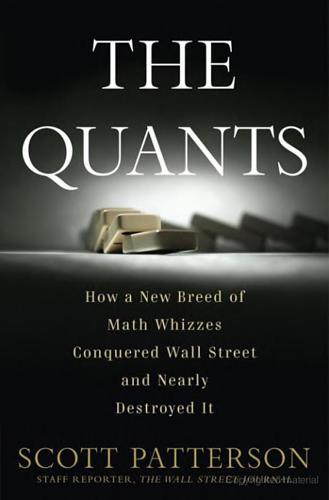
The Quants
by
Scott Patterson
Published 2 Feb 2010
MIT finance professor Andrew Lo, and his student Amir Khandani, published a definitive study of the meltdown in October 2007 called “What Happened to the Quants?” Ominously, they evoked an apocryphal Doomsday Clock for the global financial system. In August 2007, the clock ticked nearer to midnight, perhaps the closest it had come to financial Armageddon since Long-Term Capital’s implosion in 1998. “If we were to develop a Doomsday Clock for the hedge-fund industry’s impact on the global financial system,” they wrote, “calibrated to five minutes to midnight in August 1998, and fifteen minutes to midnight in January 1999, then our current outlook for the state of systemic risk in the hedge-fund industry is about 11:51 P.M.
…
For Mom and Pop Contents The Players 1 ALL IN 2 THE GODFATHER: ED THORP 3 BEAT THE MARKET 4 THE VOLATILITY SMILE 5 FOUR OF A KIND 6 THE WOLF 7 THE MONEY GRID 8 LIVING THE DREAM 9 “I KEEP MY FINGERS CROSSED FOR THE FUTURE” 10 THE AUGUST FACTOR 11 THE DOOMSDAY CLOCK 12 A FLAW 13 THE DEVIL’S WORK 14 DARK POOLS Notes Glossary Acknowledgments The Players Peter Muller, outspokenly eccentric manager of Morgan Stanley’s secretive hedge fund PDT. A whip-smart mathematician who occasionally took to New York’s subways to play his keyboard for commuters, in 2007 Muller had just returned to his hedge fund after a long sabbatical, with grand plans of expanding operations and juicing returns even further.
…
In response to the volatility, the Federal Reserve, which didn’t know about the SocGen trades, slashed short-term rates by three-quarters of a point, a bold move that frightened investors because it smacked of panic. Still, even as the system teetered on the edge, many of the smartest investors in the world couldn’t see the destructive tsunami heading directly for them. The implosion of Bear Stearns in March was a wake-up call. The Doomsday Clock was ticking. Around 1:00 p.m. on March 13, 2008, Jimmy Cayne sat down at a card table in Detroit and began to craft his strategy. The seventy-four-year-old chairman of Bear Stearns, seeded fourth in a group of 130 in the IMP Pairs category of the North American Bridge Championship, was squarely focused on the cards in his hand.
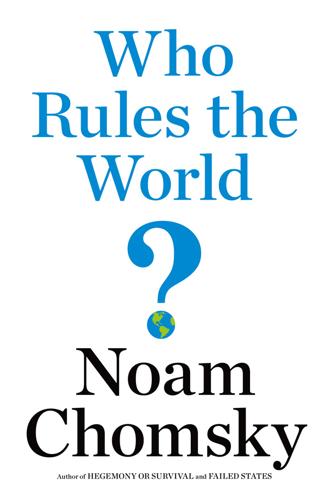
Who Rules the World?
by
Noam Chomsky
The Clinton doctrine affirmed that the United States is entitled to resort to the “unilateral use of military power” even to ensure “uninhibited access to key markets, energy supplies, and strategic resources,” let alone alleged “security” or “humanitarian” concerns.44 Adherence to various versions of this doctrine has been well confirmed in practice, as need hardly be discussed among people willing to look at the facts of current history. These are among the critical matters that should be the focus of attention in analyzing the nuclear deal at Vienna. 22 The Doomsday Clock In January 2015, the Bulletin of the Atomic Scientists advanced its famous Doomsday Clock to three minutes before midnight, a threat level that had not been reached for thirty years. The Bulletin’s statement explaining this advance toward catastrophe invoked the two major threats to survival: nuclear weapons and “unchecked climate change.”
…
And this is not happening just in the U.S.; in Europe the impact may be even worse.10 Let us turn to the other (and traditional) concern of the atomic scientists who adjust the Doomsday Clock: nuclear weapons. The current threat of nuclear war amply justifies their January 2015 decision to advance the clock two minutes toward midnight. What has happened since reveals the growing threat even more clearly, a matter that elicits insufficient concern, in my opinion. The last time the Doomsday Clock reached three minutes before midnight was in 1983, at the time of the Able Archer exercises of the Reagan administration; these exercises simulated attacks on the Soviet Union to test their defense systems.
…
Russia also ordered its missile cruiser Moskva, with its long-range air defense system, to move closer to shore, so that it may be “ready to destroy any aerial target posing a potential danger to our aircraft,” Defense Minister Sergei Shoigu announced. All of this sets the stage for confrontations that could be lethal.19 Tensions are also constant at NATO-Russian borders, including military maneuvers on both sides. Shortly after the Doomsday Clock was moved ominously close to midnight, the national press reported that “U.S. military combat vehicles paraded Wednesday through an Estonian city that juts into Russia, a symbolic act that highlighted the stakes for both sides amid the worst tensions between the West and Russia since the Cold War.”20 Shortly before, a Russian warplane came within seconds of colliding with a Danish civilian airliner.
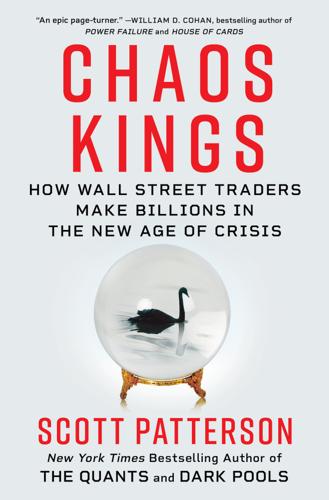
Chaos Kings: How Wall Street Traders Make Billions in the New Age of Crisis
by
Scott Patterson
Published 5 Jun 2023
Because most other investors weren’t worried about risk, and volatility was near record lows, Universa was able to quickly load up on dirt cheap S&P 500 puts and VIX call options—bets on a spike in volatility—before things went crazy. * * * On January 23, 2020, the Bulletin of Atomic Scientists moved its Doomsday Clock twenty seconds closer to midnight—“closer,” it said, “to apocalypse than ever”—a symbolic one hundred seconds to humanity’s ruin. The group, founded in 1945 by Albert Einstein and others involved in creating the atomic bomb, cited climate change, the ever-present threat of nuclear disaster, and cyber-enabled information warfare as the most prominent factors forcing the heightened threat level.
…
At least part of the truth was revealed in June 2021 when Greenpeace UK released a secret recording of an ExxonMobil lobbyist named Keith McCoy bragging about how the oil giant’s support for a carbon tax was “a great talking point”—but it would never happen. “Nobody is going to propose a tax on all Americans,” McCoy said. “And the cynical side of me says, yeah, we kind of know that.” CHAPTER 20 THE GAMBLE On January 27, 2021, the Bulletin of Atomic Scientists said its Doomsday Clock stood at one hundred seconds to midnight—unmoved since the previous year. Two big things had changed in those twelve months. Covid-19 was killing people around the world. And Donald Trump was no longer president of the United States. The second apparently offset the first to some extent—at least, the scientists nodded in that direction.
…
The problem it illuminated was that humanity—or at least most of it, since some countries, such as New Zealand, Australia, and South Korea, had fared relatively well—had seriously bungled its response, leading to the death of millions. The pandemic was a “historic wake-up call,” Rachel Bronson, president of the Bulletin of Atomic Scientists, said in its annual Doomsday Clock statement. The disastrous response to Covid-19 illustrated “that national governments and international organizations are unprepared to manage nuclear weapons and climate change, which currently pose existential threats to humanity, or other dangers—including more virulent pandemics and next-generation warfare—that could threaten civilization in the near future.”

Beyond: Our Future in Space
by
Chris Impey
Published 12 Apr 2015
But long before that, the Sun will start to burn hotter as it consumes its hydrogen; about half a billion years from now, the temperature on Earth will have risen enough to make the oceans boil.12 Those timescales are long enough that we might be forgiven for not getting too worried. The best metric for proximate danger is the Bulletin of the Atomic Scientists. Starting in 1947, a group of scientists and engineers created the Doomsday Clock to show how far we were from apocalypse. As the threat of nuclear holocaust receded, the proximity of the clock to midnight started to take into account the possibility that through climate change, biotechnology, and/or cyber-technology we could cause irrevocable harm to our way of life and the planet.
…
The technological innovations that drive the argument and act more effectively as filters are those that almost all civilizations eventually discover, where their discovery almost universally leads to disaster (Figure 55). Figure 55. In the short history of the “nuclear age,” we have come close to a holocaust several times. The Doomsday Clock tracks our proximity to Armageddon. Civilizations may become unstable and destroy themselves. This issue impacts the prospect of companionship and contemporaneous communication in space. Bostrom has said: “I hope that our Mars probes will discover nothing. It would be good news if we find Mars to be completely sterile.
…
Microbes that live inside rock or far below the surface of the ocean are immune to moderate changes in solar radiation since they live off geological energy. As the Earth becomes intolerably hot, we’ll have to develop Biospheres for the whole population—assuming humans persist that long. 13. Since 2012, the Doomsday Clock has stood at five minutes to midnight, uncomfortably close to disaster. The explanation associated with that judgment is worth quoting in full: “The challenges to rid the world of nuclear weapons, harness nuclear power, and meet the nearly inexorable climate disruptions from global warming are complex and interconnected.
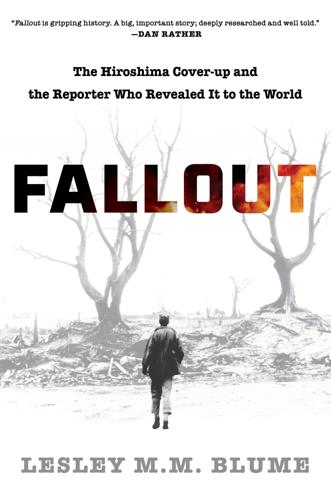
Fallout: The Hiroshima Cover-Up and the Reporter Who Revealed It to the World
by
Lesley M. M. Blume
Published 3 Aug 2020
Rowe and Robert Schulmann, eds., Einstein on Politics: His Private Thoughts and Public Stands on Nationalism, Zionism, War, Peace, and the Bomb (Princeton, NJ: Princeton University Press, 2007), 405. “slippage”: John Hersey as quoted in “After Hiroshima: An Interview with John Hersey,” Antaeus Report, Fall 1984, 4. “100 seconds to midnight”: “Closer than ever: It is 100 seconds to midnight: 2020 Doomsday Clock Statement,” Bulletin of the Atomic Scientists, John Mecklin, ed., January 23, 2020, https://thebulletin.org/doomsday-clock/current-time/. “the most dangerous…” and “The world is…”: Dr. William J. Perry interview with Lesley Blume, January 31, 2020, and Dr. William J. Perry interview with Lesley Blume, February 5, 2019. a third supported [North Korea] strike…, “It’s our best…,” and “to end North…”: Alida R.
…
International treaties restricting such escalation are being abandoned. North Korea has been provocatively testing missiles while the United States occasionally rattles its saber in reply—but essentially looks the other way; Turkey is now vying to join the nuclear club. The Bulletin of the Atomic Scientists, a nuclear watchdog group, has reset its Doomsday Clock—which gauges the world’s proximity to the possibility of nuclear war—to “100 seconds to midnight,” with midnight meaning nuclear apocalypse. The clock has never been that close to midnight—not even in 1953, “the most dangerous year of the Cold War,” says Dr. William J. Perry, former U.S. secretary of defense and chair of the Bulletin’s board of sponsors.
…
.: and development of poison gas, 148–49 government pushback to “Hiroshima” urged by, 149 long-term impact of “Hiroshima” as worrisome to, 160 Manhattan Project and, 149 public support for nuclear arsenal buildup as concern of, 148 Stimson advised on article by, 151–53 concentration camps, 168 Condé Nast Publications, 181 copyright laws, 142 Cousins, Norman, 55, 146, 149 Cronkite, Walter, 3 cult of the author, Hersey’s rejection of, 176 Culver City, Calif., 62 Daily Express (London), 26, 30–31, 46, 87, 131 Dawn Over Zero (Laurence), 99 “Decision to Use the Atomic Bomb, The” (Stimson; Harper’s article), 152–57 Conant as adviser on, 151–53 on decision not to provide pre-deployment demonstration of bomb, 153 facts-only approach of, 152–53 as failing to address government cover-up, 157–58 guarded press response to, 157–58 on projected casualties from invasion of Japan, 155 Stimson’s reservations about, 151–52, 153 Truman and, 153 war portrayed as anonymous abstraction in, 158–59 dehumanization, of enemies, 13 genocide and, 182 democracy, 18, 24, 166 free press as vital to survival of, 182–83 Dick Cavett Show, The, 176 Diller, LeGrande A., 65–66 “Disease X,” see radiation poisoning Doomsday Clock, 13 East Asia Tin Works, 93, 100, 101, 113 Edwards, Ralph, 177 Einstein, Albert, 11, 12, 122, 183 on nuclear weapons, 147–48 Eisenhower, Dwight D., on use of nuclear weapons, 171 Eisenstaedt, Alfred, 43 Enola Gay, 133, 177 ethics, of atomic bomb use, 106, 130 Europe, 15, 17 aftermath of war in, 19 McCrary press junket in, 29 postwar reconstruction in, 43 Eyerman, J.
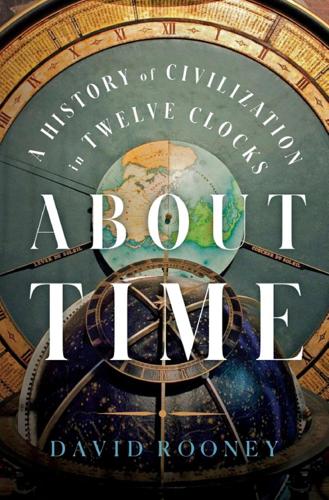
About Time: A History of Civilization in Twelve Clocks
by
David Rooney
Published 16 Aug 2021
James’s Church and clock tower from Brno’s central square, photographed in the early twentieth century 143 Assistant at the Greenwich observatory time-signal control desk, c. 1897 147 Officials investigating bomb damage at the Edinburgh observatory, 1913 160 Government sketch showing the scene of the Greenwich observatory explosion, 1894 170 Greenwich observatory official posing with gate clock, c. 1925 172 Crawford Market and clock tower, Bombay, in an early-twentieth-century postcard 175 Ethel Cain, photographed after winning the “Golden Voice” competition final, 1935 180 Family photograph of Mary Dixon (right) with her older sisters, Anne (middle) and Margaret (left), outside their home in Jarrow, 1930s 181 Watchmaker Daniela Toms adjusting a Charles Frodsham and Co. wristwatch, 2020 188 Efratom miniature atomic clock, backup for the two clocks installed on the NTS-1 satellite, made c. 1972 198 Thwaites and Reed rolling-ball clock, made c. 1972 202 Doomsday Clock, photographed on January 23, 2020, after having been adjusted to 100 seconds to midnight 204 Plutonium timekeeper buried at Osaka, 1970 215 About Time Introduction Korean Air Lines Flight 007, 1983 It is the early hours of a crisp Alaskan morning. Korean Air Lines’ Captain Chun Byung-in, First Officer Son Dong-hui and Flight Engineer Kim Eui-dong stride purposefully across the tarmac of Anchorage International Airport and climb into the cockpit of the Boeing 747 airliner that they are rostered to fly to Seoul’s Gimpo International Airport.
…
It was war that turned this idea from a civilian oddity into a military necessity, in both the First World War and the Second World War, with munitions factories in full production and fuel for lighting and power in short supply. Here, in the most widespread way, we see clocks enabling efficient wars and then reshaping the patterns of peacetime. Doomsday Clock, photographed on January 23, 2020, after having been adjusted to 100 seconds to midnight These and countless other examples simply remind us that technological development is often catalyzed, accelerated or shaped by war, and clocks sit at the heart of it all. Clocks have always been as much a class of military weapon as are bullets and bombs.
…
March, 150 Danse Macabre (Dance of Death), 60–61 da Silva, Pedro, 87 Daylight Saving Time, 73, 153–56, 203–4 death, hourglass as symbol of, 59–62 de Figueredo, Manuel, 87 Dengfeng observatory, 90–91 Dickinson, Henry, 137–38 Dingle, Anthony, 150 discipline, 41 Dixon, Mary, 177–78, 179, 181–82, 181 domestic clocks, 58 Dondi, Giovanni de, 17, 18, 32–33, 34 Dondi, Jacopo de, 17, 18 Doomsday Clock, 203, 204 Doyle, Arthur Conan, 154 du Bois, Joseph, 87–88 Dundas, James, 109 Dunkin, Edwin, 109 Dunt, Ian, 196 Edison, Thomas, 144 Efratom, 197–99, 198, 201, 204–5 Einstein, Albert, 156, 197, 198 electric time systems, 143–45, 143 time standardization and, 144–46, 148, 149, 153–54 empires astronomy and, 91–92 public clocks and, 14–15, 23–24 See also imperialism/colonialism; political identity and power engine clocks, 163–64 Eno, Brian, 219, 220, 221 Epistle of Othéa, The (Christine de Pizan), 56 European Southern Observatory, 86 Exposition Universelle, Paris (1878), 134–35 Factory Act (1844) (UK), 151, 152 Factory Act (1901) (UK), 152 faith astrology and, 34 astronomical clocks and, 27–29, 33, 34–38 automaton clocks and, 27–29, 33, 34–38, 37 Buddhism, 31 Christianity, 30, 34–35, 38–39, 40–41, 54 Hinduism, 31 Islam, 26–29, 27, 30 Judaism, 30–31 limitation of early clocks for, 31–32 political identity and power and, 43, 44, 45 Sikhism, 31 wasting time and, 40–41 Fallows, Fearon, 102, 103 Farage, Nigel, 195 Father Time, 59 Fayrer, James, 103 Ferguson, Adam, 141 fiber-optic time services, 79–81, 80 financial markets, 74–77 abstract nature of, 69–70 daylight saving and, 73 early securities exchanges, 67 fiber-optic time services and, 79–81, 80 intermediate roles in, 67 Royal Exchange, London, 70–71, 71 synchronization and, 72–73, 74, 75 time-stamping and, 75–77, 79, 81 trading methods, 74–75 Finer, Jem, 221 First Punic War, 9 Flamsteed, John, 88, 91 flying Dutchman, 106 Ford, Henry, 137–42 Francois, Mark, 195 Franklin, Benjamin, 41, 74, 164 free-pendulum clocks, 118–19 Gabelsperger, Anton, 88 Galileo satellite network, 205 globalization, 207, 209 Global Positioning System.

Enlightenment Now: The Case for Reason, Science, Humanism, and Progress
by
Steven Pinker
Published 13 Feb 2018
Scientists have founded the major activist and watchdog organizations, including the Union of Concerned Scientists, the Federation of American Scientists, the Committee for Nuclear Responsibility, the Pugwash Conferences, and the Bulletin of the Atomic Scientists, whose cover shows the famous Doomsday Clock, now set at two and a half minutes to midnight.69 Physical scientists, unfortunately, often consider themselves experts in political psychology, and many seem to embrace the folk theory that the most effective way to mobilize public opinion is to whip people into a lather of fear and dread. The Doomsday Clock, despite adorning a journal with “Scientists” in its title, does not track objective indicators of nuclear security; rather, it’s a propaganda stunt intended, in the words of its founder, “to preserve civilization by scaring men into rationality.”70 The clock’s minute hand was farther from midnight in 1962, the year of the Cuban Missile Crisis, than it was in the far calmer 2007, in part because the editors, worried that the public had become too complacent, redefined “doomsday” to include climate change.71 And in their campaign to shake people out of their apathy, scientific experts have made some not-so-prescient predictions: Only the creation of a world government can prevent the impending self-destruction of mankind.
…
World’s nuclear stockpile: Kristensen & Norris 2016a; see also note 113 below. 68. Nuclear winter: Robock & Toon 2012; A. Robock & O. B. Toon, “Let’s End the Peril of a Nuclear Winter,” New York Times, Feb. 11, 2016. History of nuclear winter/autumn controversy: Morton 2015. 69. Doomsday Clock: Bulletin of the Atomic Scientists 2017. 70. Eugene Rabinowitch, quoted in Mueller 2010a, p. 26. 71. Doomsday Clock: Bulletin of the Atomic Scientists, “A Timeline of Conflict, Culture, and Change,” Nov. 13, 2013, http://thebulletin.org/multimedia/timeline-conflict-culture-and-change. 72. Quoted in Mueller 1989, p. 98. 73. Quoted in Mueller 1989, p. 271, note 2. 74.
…
As early as 1945, the theologian Reinhold Niebuhr observed, “Ultimate perils, however great, have a less lively influence upon the human imagination than immediate resentments and frictions, however small by comparison.”85 The historian Paul Boyer found that nuclear alarmism actually encouraged the arms race by scaring the nation into pursuing more and bigger bombs, the better to deter the Soviets.86 Even the originator of the Doomsday Clock, Eugene Rabinowitch, came to regret his movement’s strategy: “While trying to frighten men into rationality, scientists have frightened many into abject fear or blind hatred.”87 * * * As we saw with climate change, people may be likelier to acknowledge a problem when they have reason to think it is solvable than when they are terrified into numbness and helplessness.88 A positive agenda for removing the threat of nuclear war from the human condition would embrace several ideas.

What We Say Goes: Conversations on U.S. Power in a Changing World
by
Noam Chomsky
and
David Barsamian
Published 1 Oct 2007
The effects of global warming are going to come, but you can mitigate them, adjust to them, and prepare for them. The disaster is not imminent. In the case of nuclear weapons, on the other hand, a disaster is always imminent, and the likelihood of catastrophe is increasing. The Bulletin of the Atomic Scientists recently moved its doomsday clock up a couple of minutes to “five minutes to midnight.”2 Even conservatives like George Shultz and Henry Kissinger are warning that the nuclear threat is serious and getting more serious.3 In part, the threat comes from nuclear proliferation. But a lot of the cause of the proliferation is right here.
…
Jimmy Carter,” Boston Globe, 16 December 2006. 32 For background, see Chomsky, Fateful Triangle, chap. 9. 33 Yehoshua Porath, Ha’aretz (Tel Aviv), 25 June 1982, translated from the Hebrew edition. 34 Carter, Palestine, Appendix 7, “Israel’s Response to the Roadmap, May 25, 2003,” pp. 243–47. 35 See, among other examples, Patrick E. Tyler, “With Time Running Out, Bush Shifted Mideast Policy,” New York Times, 30 June 2002. 7. THREATS 1 Elisabeth Rosenthal and Andrew C. Revkin, “Science Panel Says Global Warming Is ‘Unequivocal,’” New York Times, 3 February 2007. 2 “‘Doomsday Clock’ Moves Two Minutes Closer to Midnight,” Bulletin of the Atomic Scientists, media release, 18 January 2007, online at http://www.thebulletin.org/media-center/announcements/20070117.html. 3 George P. Shultz, William J. Perry, Henry A. Kissinger, and Sam Nunn, “A World Free of Nuclear Weapons,” Wall Street Journal, 4 January 2007. 4 David E.
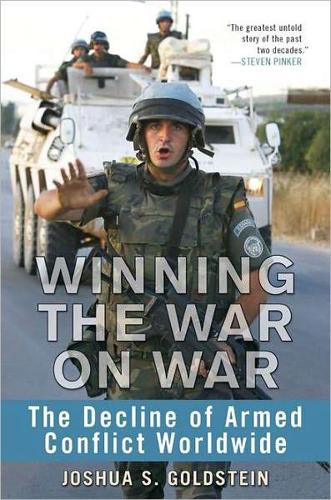
Winning the War on War: The Decline of Armed Conflict Worldwide
by
Joshua S. Goldstein
Published 15 Sep 2011
Out of Control: Global Turmoil on the Eve of the Twenty-First Century. New York: Robert Stewart [Scribner], 1993. Buhaug, Halvard, and Kristian Skrede Gleditsch. “Contagion or Confusion? Why Conflicts Cluster in Space.” International Studies Quarterly 52, 2008: 215–33. Bulletin of the Atomic Scientists. Doomsday Clock: Timeline. 2007. Accessed 6/5/09 at www.thebulletin.org/content/doomsday-clock/timeline. Burnham, Gilbert, Riyadh Lafta, Shannon Doocy, and Les Roberts. “Mortality after the 2003 Invasion of Iraq: A Cross-Sectional Cluster Sample Survey.” The Lancet 368, October 21, 2006: 1421–28. Cairns, Edmund. A Safer Future: Reducing the Human Cost of War.
…
Overall, writes journalist Gregg Easterbrook, “historians will view nuclear arms reduction as such an incredible accomplishment that it will seem bizarre in retrospect so little attention was paid while it was happening.” The numbers I just quoted came from the Bulletin of the Atomic Scientists , a wonderful source of information. The Bulletin is also the creator of the famous “doomsday clock,” which claims to track the rising and falling danger level for nuclear war over the years. In 1968 the clock was set to a dramatic “seven minutes to midnight” as the Vietnam War and other Cold War–era wars raged. Over the years the hands of the clock moved forward and back as tensions rose and fell.
…
Midpoint of low and high estimates used when no “best estimate” given. 13 Extremely lethal: O’Hanlon 2003: 27; see also Sivard 1993: 20. 13 IDPs appeared to jump: See, e.g., the graph on p. 7 of UNHCR 2009. 14 Newly displaced. . . . return home: UNHCR data; UNHCR 2009: 19–21; see also Harff and Gurr 2004: xii. 14 Child soldier recruitment: Polgreen 2008c. 14 Global Peace Index: Accessed 6/8/10 at www.visionofhumanity.org/gpi-data/#/2010/scor/. 14 Brookings: Livingston et al. 2010. 15 Peace factors: Kriesberg 2007: 99–101, 113. 15 Intractable: Crocker, Hampson, and Aall 2005: 3–4. 16 Fatality totals by war: PRIO battle-death data, see Lacina and Gleditsch 2005; Bethany Lacina, personal communication, October 2010. 18 War on terrorism: Allison 2004. 18 Mind-boggling 30,000: Data from Federation of American Scientists and National Resource Defense Council, reported in New York Times, April 8, 2010. 18 Fallen in just twenty-five years: In addition, each side has several thousand weapons waiting in line to be dismantled. 18 U.S. tactical nuclear: Norris and Kristensen 2011. 18 Storage facilities: Norris and Kristensen 2009: 86. 18–19 Incredible accomplishment: Easterbrook 2003: 70. 19 Doomsday clock: Bulletin of the Atomic Scientists 2007. 19 Total number of refugees: UNHCR 2000: 310. Higher numbers mentioned earlier include internally displaced persons. 19–20 Warned West Point cadets: Shanker 2011. 20 Global turmoil: Mearsheimer 1990: 6; Kaplan 1994; Brzezinski 1993; see also Cooper 2003: vii, 5, 25, 83. 20 Ghastly and persistent: Collier 2009: 7, 3, 4; O’Hanlon 2003: 2. 20 Mention that violence is decreasing: Crocker, Hampson, and Aall 2007; Brown 2007: 39; King 2007: 115; Gurr 2007: 133, 134, 151; Urquhart 2007: 265; O’Hanlon 2007: 323; Freedman 2007: 261. 20 No less dangerous: Solomon 2007: xi; Crocker, Hampson, and Aall 2007: 6. 21 Rape of Nanking: Chang 1997; Rummel 1991: 6–7; see also Slim 2008: 236. 21 Aerial bombardment: Slim 2008: 56–57. 21 Dresden. . . . raid: Taylor 2004: 448. 21 Fifty German cities. . . .

Reset
by
Ronald J. Deibert
Published 14 Aug 2020
In spite of all the deletions, fact-checking, and monitoring systems they produce, social media will remain easy to exploit as a tool of disinformation as long as gathering subscribers is at the heart of the business model.197 * * * In what is certainly an ominous decision, but one with which it is hard to argue, in January 2020 the esteemed Bulletin of the Atomic Scientists set their widely referenced Doomsday Clock (a symbol representing the risk of human-caused existential catastrophe) twenty seconds closer to midnight. Although they cited a number of factors, one that stood out was their concern about the toxic information environment in which we find ourselves, which they concluded had deteriorated to the point of being a public safety hazard.
…
Retrieved from https://faculty.washington.edu/kstarbi/examining-trolls-polarization.pdf “Continued corruption of the information ecosphere … has heightened the nuclear and climate threats”: Bulletin of the Atomic Scientists. (2020, January 23). Closer than ever: It is 100 seconds to midnight. Retrieved from https://thebulletin.org/doomsday-clock/current-time/ H.G. Wells described an imaginary “World Encyclopedia”: Wells, H. G. (1938). World Brain. Methuen. An imagined state of affairs where truth and democracy reigned supreme; this never actually existed: Farkas, J., & Schou, J. (2019). Post-truth, fake news and democracy: Mapping the politics of falsehood.
…
See also specific platforms by security agencies, 39, 41–45, 79 by social media, 13–14, 27–28, 63 Davidow, William, 100 Defense Advanced Research Projects Agency, 183 DemDex, 60 Democracy in Retreat (Freedom House), 200 Deng Xiaoping, 216 deregulation, 49–50, 287, 288 Deudney, Daniel, 277, 279, 281, 303–304, 316 Dewey, John, 114, 263, 279 dezinformatsiya, 121–122 Digital Minimalism (Newport), 261 Digital Wellbeing (app), 261–262 dji Technology Co., 15, 177 Doctorow, Cory, 78, 313 Dominion Energy (VA), 238 Donaghy, Rori, 150 Doomsday Clock, 132 Dorsey, Jack, 93 DoubleClick, 60 Douek, Evelyn, 301–302 Draganfly, 193 drones, 14–15, 52, 177–178, 193 drt boxes (cell site simulators), 190–191 DuckDuckGo, 270–271 Duterte, Rodrigo, 120, 125–126, 192 Ecuador, 73–74 education (public), 316–318, 319–321 edunet, 107 Egelman, Serge, 65–66 Electronic Frontier Foundation, 59, 264 The Elements of Power (Abraham), 217 Empire and Communications (Innis), 22–23, 24 encryption, 69, 195–196, 198, 292–293, 323–324.
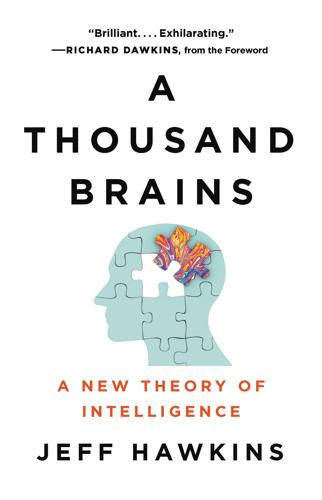
A Thousand Brains: A New Theory of Intelligence
by
Jeff Hawkins
Published 15 Nov 2021
Human intelligence, however, is not as benign. The possibility that human behavior might lead to our demise has been recognized for a long time. For example, since 1947 the Bulletin of the Atomic Scientists has maintained the Doomsday Clock to highlight how close we are to making Earth uninhabitable. First inspired by the possibility that a nuclear war and resulting conflagration could destroy Earth, the Doomsday Clock was expanded in 2007 to include climate change as a second potential cause of self-inflicted extinction. Whether nuclear weapons and human-induced climate change are existential threats is debated, but there is no question that both have the potential to cause great human suffering.

Accessory to War: The Unspoken Alliance Between Astrophysics and the Military
by
Neil Degrasse Tyson
and
Avis Lang
Published 10 Sep 2018
“Timeline,” Bull. Atomic Scientists, thebulletin.org/timeline; Science and Security Board, “It is two and a half minutes to midnight: 2017 Doomsday Clock Statement,” Bull. Atomic Scientists, Jan. 26, 2017, thebulletin.org/sites/default/files/Final%202017%20Clock%20Statement.pdf (accessed Apr. 27, 2017); Science and Security Board, “Statement from the President and CEO: It Is Now Two Minutes to Midnight,” Bull. Atomic Scientists, Jan. 25, 2018, thebulletin.org/2018-doomsday-clock-statement (accessed Jan. 25, 2018). 193.Bruce M. DeBlois, “The Advent of Space Weapons,” Astropolitics 1:1 (Spring 2003), 36. 194.Mizin, “Non-Weaponization of Outer Space,” 58. 195.Johnson-Freese, Heavenly Ambitions, 35; see also 119–32. 196.See, e.g., Outer Space, ed.
…
Once fifty countries have signed and ratified the treaty, it will become law.190 Writing for the Bulletin of the Atomic Scientists three weeks after Krepon’s blog post appeared, Ramesh Thakur, a former UN assistant secretary-general, characterized the global situation as precarious, especially in Asia: [U]nlike the superpower tête-à-tête of the last century, the second nuclear age features a multiplicity of nuclear powers with crisscrossing ties of cooperation and conflict, fragile command-and-control systems, critical cyber vulnerabilities, threat perceptions occurring among three or more nuclear-armed states simultaneously. . . . This is a situation that needs all the de-escalation measures it can get.191 The Bulletin of the Atomic Scientists, by the way, is the home of the Doomsday Clock. The cover of its June 1947 issue featured a schematic clock set at seven minutes to midnight, indicating “the urgency of nuclear danger.” Since then, the clock’s hands have been moved twenty-one times in accordance with “whether events push humanity closer to or further from nuclear apocalypse.”
…
Clarke and, 394n Canadian satellite, 353 collision of, 3, 4 Defense Satellite Communication System, 501n during Eisenhower era, 278–79, 501n International Telecommunications Satellite Organization (Intelsat), 340, 501n use in Gulf War, 340–41, 517n compass card (wind rose), 77, 78 compass (magnetic), development, 75–78 Comprehensive Nuclear Test Ban Treaty (CTBT, 1996), 313–14, 508n Comte, Auguste, 147–48 concave lenses, 110, 129, 442n Concerning the More Certain Fundamentals of Astrology (Kepler), 49 Conduct of the Persian Gulf War, 341–42 Congress, United States Cox Committee, 374–76 Democratic Congresses support of wars in twentieth century, 10–11, 410n Republican Congress support of Iraq War, 11 use of military force authorized by, 10–11, 410n conjunction in February 1953 BC, 43 conscription of nonmilitary organizations, 322, 329–30 Convento de Cristo, Portugal, 80 convex lenses, 110, 129 Cook, James, 91, 92, 97, 130, 441n “Cooperation in Space” agreement of 1972, 357, 521n Copernicus, Nicolaus, 49, 440n Copernicus satellite system (EU), 160, 329 copper, 69–70, 432–33n Cordesman, Anthony H., 347–48 Corker, Bob, 530n Cornwall, England, 70, 71, 439n Corona missions, 158–59, 278, 458n CORONA (KH-1) satellites, 204–5, 228, 500n Corporation for Public Broadcasting, 289 Cosgrove, Denis, 89 Cosimo II de’ Medici, 53, 442–43n Cosmic Discovery (Harwit), 151 cosmic microwave background, 171, 199, 399 cosmic rays, 6, 214, 218 counterspace, 236, 237, 322, 373, 393–94, 478–79nn, 531n Counterspace Operations: Air Force Doctrine Document, 322 Courier communication satellite, 278 Course on Positive Philosophy (Comte), 147–48 Covault, Craig, 471n Cox Committee, 374–75 Cromwell, Seymour, 55 cruise missiles, 18, 332, 346 Cuban Missile Crisis, 273, 497n cuckoos, 65 Cumings, Bruce, 314 Curiosity rover, 242, 371, 389 Curran, Joan, 195 Curtis, Heber D., 131, 134, 453n cyberspace, paired with space, 235, 236, 308, 319, 321 cyberwar, 235 da Costa, Emilia Viotti, 83 da Gama, Vasco, 81 Daguerre, Louis-Jacques-Mandé, 141, 142, 143, 456n daguerreotypes, 141, 142–44, 148, 456n Darius the Great, 119 Darwin, Charles, 97 d’Aurillac, Gerbert, 101, 441n da Vinci, Leonardo, 240 Davis, Jefferson, 124 dazzle camouflage, 172, 173–74, 259 dead reckoning, 77, 82, 86 Dean, Patrick, 292 “death rays,” 243–45 Dee, John, 106–7 Deep Impact mission, 207–8 Deep Impact (movie), 255 deep space, collaboration in, 398 de-escalation in space, focus on, 397, 531–32n Defense Advanced Research Projects Agency (DARPA), 21, 154, 338–39, 345 Defense Meteorological Satellite Program (DMSP), 158, 341–42, 501–2n Defense Satellite Communication System, 501n defense share, 452–53n Defense Support Program satellites, 158, 341 Democritus, 169 Descartes, René, 444n detection defined, 183–84 exoplanets, 175, 399 gamma rays, 199, 213–18 Hubble Space Telescope, detection story, 227–33 infrared light, 169–70, 199, 219–25 Jodrell Bank, detection story, 209–13 survival and conquest and, 171–72 X-rays, 180, 213, 225–27 deterrence diplomacy and, 312–15 and first use as option, 308, 309 through military strength, 305–6, 311–12, 316 by NATO, 305–6, 309–10 nuclear arsenals and, 237, 308, 309, 311–12 space weaponry and, 260, 299–300, 312 Dias, Bartolomeu, 81 differentiation, 384–85 Dingell, John, 418–19n diplomacy deterrence and, 312–15 Outer Space Treaty and, 274, 313, 382, 503n space diplomacy, 260–61, 312–13, 531n directed-energy weapons, 240–41, 242 see also lasers Dismantling the Empire (Johnson), 35 Dobrynin, Anatoly F., 292 Doel, Ronald E., 223 Dollond, John, 111, 130, 131 Dollond, Peter, 111, 130 Dolman, Everett C., 280–81, 330, 489n Doomsday Clock, 310–11 Dos Passos, John, 161 double concave lenses, 129 double convex lenses, 129 Dowd, Maureen, 36 Draper, John William, 144 Dr. Strangelove (movie), 300 Duffner, Robert W., 152–53 Dyna-Soar spaceplane, 279 Earth-observation satellites, see remote-sensing satellites Eastman Dry Plate and Film Company, 144 Eastman Kodak, 203, 205 Ebertin, Elsbeth, 57–58, 61 Echo communication satellite, 278 eclipses and ancient astronomy, 44–49, 423–24n cycle of lunar eclipses, 56 daguerreotype of solar eclipse, 144 effects on history, 45–49 evidence of Earth’s slowing rotation, 46 Eddington, Arthur, 400–401 Edison, Thomas Alva, 220 education in science and engineering decline in US share of degrees, 22, 31 reaction to Sputnik launch, 270, 490n Egypt ancient astronomy, 39, 40, 42 early ships, 68, 432n Nabta Playa, 42 pyramids at Giza, 42 solar calendar with 365 days, 40, 422–23n Einstein, Albert, 182, 215, 218 Eisenhower, Dwight D.
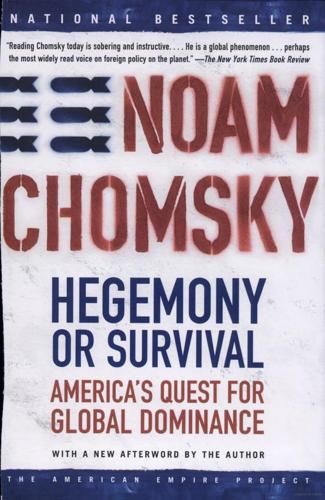
Hegemony or Survival: America's Quest for Global Dominance
by
Noam Chomsky
Published 1 Jan 2003
Now Europe is internally at peace, just as North America has been since the native population was virtually annihilated, half of Mexico conquered, the US-Canada border established, and the phrase “United States” transformed from plural to singular 150 years ago. On a global scale, however, the practices, institutions, and dominant culture remain largely unchanged. The portents cannot be lightly dismissed. Chapter 4 Dangerous Times Concern about current threats is widespread and realistic. In February 2002 the famous “doomsday clock” of the Bulletin of the Atomic Scientists was advanced two minutes toward midnight, even before the release of the Bush administration’s National Security Strategy and Nuclear Posture Review, which elicited shudders worldwide. With different threats in mind, strategic analyst Michael Krepon regarded the final days of 2002 as “the most dangerous time since the 1962 Cuban missile crisis.”
…
See also multinational corporations Costa Rica, 178 Costigliola, Frank, 79, 80 Council on Foreign Relations, 123 counterinsurgency, 191 “counterterror,” 107, 189 crime, fear of, 117 crimes against humanity, 20–21 Cuba, 12, 97, 103, 122, 189 Angola and, 93–94 just war theory and, 202, 203, 205, 206 missile crisis, 14, 73–80, 83, 85, 87, 91, 129, 157, 187, 225 US campaign against, 14, 65, 78, 80–90, 93, 95, 202 Cubana airliner bombing, 85, 86 Cuban-American National Foundation (CANF), 86 Czechoslovakia, 46, 68 Daalder, Ivo, 222 DARPA, 229 Dayan, Moshe, 184 Defense Department, 39, 41, 83 democracy, 4–8, 16 Algeria and, 115 control of public opinion in, 6–8 decolonization and, 29 election of 2000 and, 139 fascism and, 67, 69 human rights and, 129–39 Indonesia and, 163 Iraq and, 141–43 Middle East and, 106, 129, 136–37, 179 neoliberalism and, 6–7, 138–39 Nicaragua and, 103 peace and, 62, 71–72 US and, 10, 69, 214 war on Iraq and, 33, 36, 130–36 Dewey, John, 15 dictators, US support for, 112–15 Diego Garcia, 162 Dimona reactor, Israel’s, 25 Dole, Bob, 112 “Domestic Security Enhancement Act of 2003,” 27 Domínguez, Jorge, 83 Dominican Republic, 46 “doomsday clock,” 73 drug war, 59–61, 117–18 Dulles, Allen, 65, 81, 103 Dulles, John Foster, 64, 163 Duvalier, “Baby Doc,” 112 Duvalier, “Papa Doc,” 82 East Asia, 148, 153, 155 Eastern Europe, 137, 145–48 East Timor, 22, 53–54, 56, 58, 60, 61, 130, 142 Eban, Abba, 118 “Economic Charter for the Americas,” 66 economic nationalism, 66 economic policies and conditions.
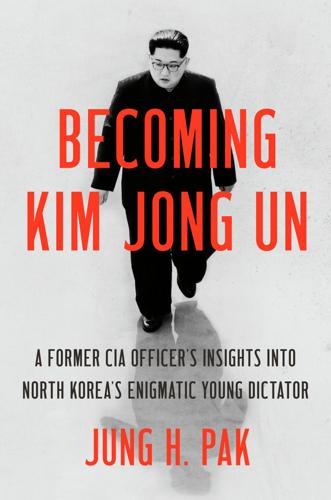
Becoming Kim Jong Un: A Former CIA Officer's Insights Into North Korea's Enigmatic Young Dictator
by
Jung H. Pak
Published 14 Apr 2020
McMaster said in early December at an event in Washington that the North Korean threat is “increasing every day” and “there’s not much time left.” Time seemed to be running out. The Bulletin of the Atomic Scientists announced in January that “it is now two minutes to midnight,” the closest the world has been to midnight since 1953 at the height of the Cold War. In its statement about the Doomsday Clock, a symbol of concerns among scientists about the potential for nuclear annihilation, the Bulletin explained that its reason for moving the clock closer to midnight was the “hyperbolic rhetoric and provocative actions” by North Korea and the United States that “have increased the possibility of nuclear war by accident or miscalculation.”
…
McMaster said in early December: Alex Pappas, “H. R. McMaster: Potential for War with North Korea Increases ‘Every Day,’ ” Fox News, December 2, 2017. The Bulletin of the Atomic Scientists: @BulletinAtomic, January 25, 2018, https://twitter.com/BulletinAtomic/status/956550260318285824. In its statement: Barbara Goldberg, “ ‘Doomsday Clock’ Closest to Midnight Since Cold War over Nuclear Threat,” Reuters, January 25, 2018. Credible media reports: Zachary Cohen, Nicole Gaouette, Barbara Starr, and Kevin Liptak, “Trump Advisers Clash over ‘Bloody Nose’ Strike on North Korea,” CNN, February 1, 2018. The threat of a conflict: Maria Perez, “Chilling Video: Child Placed in Storm Drain during Hawaii Missile Scare,” Newsweek, January 15, 2018.
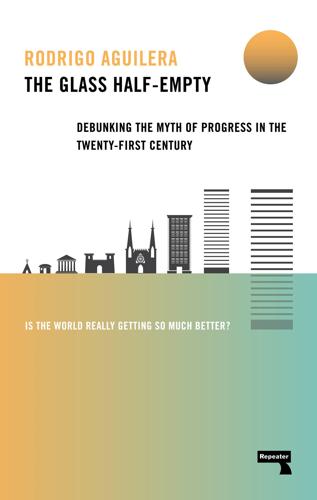
The Glass Half-Empty: Debunking the Myth of Progress in the Twenty-First Century
by
Rodrigo Aguilera
Published 10 Mar 2020
The threat of nuclear war, of course, remains the main existential threat. The US and North Korea continue a tit-for-tat war of words (more pathetically, via Twitter), while Russian and NATO fighter jets crisscross their way through Syria in support of their respective dueling factions. But the Doomsday Clock, a metaphorical (and admittedly somewhat gimmicky) device conceived by the Bulletin of Atomic Scientists in 1947 to show the risk of human extinction by nuclear war, now fully incorporates climate change into its consideration as well. To say nothing of the technologies that are currently in their adolescence, like artificial intelligence, which may pose just as great a long-term danger to our existence if they are not harnessed correctly, which is virtually guaranteed if they are developed for profit rather than a more sustainable form of human progress.
…
To say nothing of the technologies that are currently in their adolescence, like artificial intelligence, which may pose just as great a long-term danger to our existence if they are not harnessed correctly, which is virtually guaranteed if they are developed for profit rather than a more sustainable form of human progress. The 2017 Doomsday Clock statement made this point, reinforcing the argument made in Chapter One that institutions need to be ahead of the curb in addressing potential threats: Technological innovation is occurring at a speed that challenges society’s ability to keep pace. While limited at the current time, potentially existential threats posed by a host of emerging technologies need to be monitored, and to the extent possible anticipated, as the 21st century unfolds.58 Pinker has downplayed this, claiming that “if the hands of a clock point to a few minutes to midnight for seventy-two years, then something is wrong with the clock”,59 a statement which after reading the opening section of this chapter should sound profoundly naive.

Extreme Money: Masters of the Universe and the Cult of Risk
by
Satyajit Das
Published 14 Oct 2011
This leads to a constant cycle of credit booms and bust. In the second half of the twentieth century, credit money gradually became the primary form of money, leading to an explosion of debt. In 1947 the directors of the Bulletin of Atomic Scientists at the University of Chicago created the doomsday clock. The minutes to midnight represent the time remaining to catastrophic destruction (midnight) of the human race from global nuclear war. In 1989 Seymour Darst, a New York real estate developer, created the financial equivalent. He installed the national debt clock—a billboard-size digital display on Sixth Avenue (Avenue of the Americas) in Manhattan, New York, that constantly updates to show the current U.S. public debt and each American family’s share of it.
…
It consisted of a computer linked to a stockpile of hydrogen bombs, programmed to detonate them and bathe the planet in nuclear fallout at the signal of an impending nuclear attack from another nation. In Stanley Kubrick’s film Dr Strangelove or: How I Learned to Stop Worrying and Love the Bomb, there is speculation about whether the Russians possess this technology. Currently, the doomsday clock reads around 5 minutes to midnight. In 2008, as the global financial crisis gripped the world, the financial equivalent of the doomsday machine—an unstable system of money and unsustainable levels of debt—reached midnight and imploded. Money Is Nothing At each step of the transition from commodity to paper to credit, money became more unreal, and detached from the real goods and services that money can be exchanged for.
…
See also exotic products AIG, 230-234 arbitrage, 242 central banks, 281-282 deconstruction, 235-236 first-to-default (FtD) swaps, 220-221 Harvard case studies, 214-215 hedging, 216-217 Italy, 215-216 Jerome Kerviel, 226-230 managing risk, 124 markets, 235, 334 municipal bonds, 211-214 price movements, 210-211 risk, 218-219 design of, 225 Fiat, 222-223 Greece, 223, 225 sale of to ordinary investors, 332-333 sovereign debt, 236-238 TARDIS trades, 217-218 TOBs (tender option bonds), 222 Derman, Emanuel, 309 Derrida, Jacques, 236 Descartes, René, 228 Detroit, 42 Deutsche Bank, 79, 195, 272, 312 Devaney, John, 255 di Lampedusa, Giuseppe, 353 digitals, 211 Dillion Read, 201 Dimon, Jamie, 283, 290 dinars, 21 Diners Club, 71 Dirac, Paul, 104 dirty bombs, 26 disaster capitalism, 342 discrete time intervals, 121 dismal science, 102-104 dispersion swaps, 255 distressed debt trading, 242 distributions, normal, 126 diversification, 122-124 dividends, 119 Dixon, Geoff, 156 documentation requirements, 181 DOG (debt overburdened group), 161 dollars American, 21-22, 28, 87 aussies, 21 kiwis, 21 Zimbabwe, 23 domain knowledge, 64 domestic corporate profits, United States, 276 Dominion Bond Rating Service, 283 doomsday clock, 34 Dorgan, Bryan, 67 Douglas, Michael, 167, 310 Dow 36,000, 99 Dow 40,000: Strategies for Profiting from the Greatest Bull Market in History, 97 Dow 100,000, 97 Dow Jones Industrial Average (DJIA), 89, 97, 126 Dr. Doom, 95 Dr. Strangelove or How I Learned to Stop Worrying and Love the Bomb, 35 Drexel Burnham Lambert, 140, 230 Drexel Harriman Ripley, 144 Drexel system, 151-152 Druckenmiller, Stanley, 261 Drucker, Peter, 63 drunk trading, 40 Dubai International Financial Centre (DIFC), 82-83 Dublin as a financial center, 83 Duncan, Richard, 235 Dunninger, Karl, 355 Duquesne Capital Management, 261 Durand, David, 116, 119 DVT (deep vein thrombosis), 166 Dynamite Prize in Economics, 304 E early return of capital, 156 earnings General Electric (GE), 61 loans, 70 Eastern Europe, reintegration of after fall of Berlin Wall, 295 Eaton Leonard LBOs, 150 eBay, 345 Ebbers, Bernie, 54 economic growth, risk, 295-296 economic rents, 276-277 economics, definition of, 102 Economics of Happiness, The, 364 Economist, The, 62, 77, 327 Edens, Wesley R., 239 education, finance careers, 308-313 bonuses, 317-318 compensation, 313-320 efficient market hypothesis (EMH), 118, 303 Ehrenreich, Barbara, 186 Einarsson, Sigurdur, 275 Einhorn, David, 256, 259, 274 Einstein, Albert, 90, 126, 128 Eisenhower, Dwight D., 294 El-Dorado economics, 84-85 Electric & Musical Industries, 157 Elias, David, 97 Elie Wiesel Foundation for Humanity, 313 Eliot, T.S., 321 Ellis, Bret Easton, 313 embedded loss leverage, 193 EMEA Trading in Local Currency, 318 emerging markets, 124 EMI Group, 157, 162 emotional market hypothesis, 303 Emperor Franz Joseph I, 163 employee benefits, 47 energy, 251 engineering, financial, 55-57 engineers, financial, 308 Engle, Louis, 131 Enron, 49, 55-56, 154, 283, 307, 313 Enron, 288, 307, 328 Enterprise Fund, 145 equilibrium, markets, 327 equities, 55 equity, 119 long-short funds, 240-242 private, 155, 164 failures, 162-163 infrastructure, 158 public sector services, 161 tranches, 170, 192 Equity Office Properties, 155 Ernst & Young, 244 EU (European Union), stabilization funds, 354 Eurex, 227 European debt crisis, 357-359 euros, 21 event-driven funds, 242 Ewing, J.R., 147 ex ante (expected risk), 246 ex post (based on actual risk), 246 excess spreads, 169 exchanges, money, 23-24 Exor, 222 exotic products, 73-74 expensive capital, reduction of, 75 expiry, 120 exploding ARMs, 183 exploitation, 38 exports from China, 85 exposure to catastrophic weather events, 251 F Fair Isaacs Corporation, 181 fallen angels, 144 falsifying financial statements, 289-291 Fan, Henry, 218 Fannie Mae, 339 fascism, 29 fat tails, 126 fata morgana, 130-131 Faust, 36 FCIC testimony, Alan Greenspan, 304-305 Fear of Flying, 73 fear of loss of status, 43 FEB Trucking, 150 Federal Home Loan Mortgage Corporation (FHLMC or Freddie Mac), 180 Federal Housing Administration (FHA), 179 Federal National Mortgage Association (FNMA or Fannie Mae), 179 Federal Reserve, 97, 316 Federated Department Stores, 150 fees consulting, 316 derivatives, 215 hedge funds, 245 leveraged buyouts (LBOs), 141-143 Feldstein, Martin, 316 Ferguson, Charles, 316 Ferguson, Niall, 87, 156 Ferguson, Nicholas, 163 Ferris Bueller’s Day Off, 65 Fiat S.P.A.
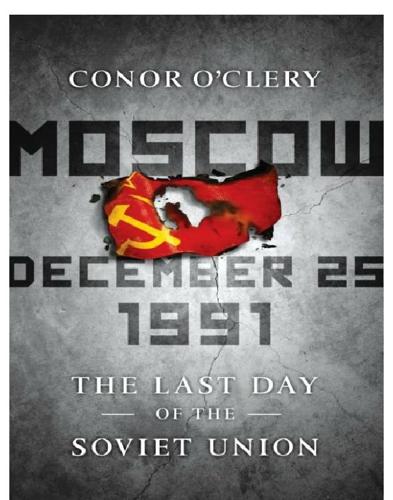
Moscow, December 25th, 1991
by
Conor O'Clery
Published 31 Jul 2011
They were invited by the Soviet government which no longer exists. The meeting goes ahead, with Yeltsin’s people, two days later, to the relief of the somewhat bewildered executives. With the end of the Soviet Union, the editors of the Bulletin of the Atomic Scientists at the University of Chicago move the hands of the Doomsday Clock back to seventeen minutes before midnight. Six years before, when Gorbachev took office, the big hand stood at three minutes to Armageddon. (In January 2010, with new tensions among the world’s nuclear nations and in light of Iran’s nuclear ambitions, the hands are moved forward again to six minutes to midnight.)
…
Congress of People’s Deputies of the Russian Soviet Federative Socialist Republic Congress of People’s Deputies of the USSR Corruption and economic reform See also Party privilege Cuenca, José Currency controls Dacha, presidential De Gaulle, Charles Declaration of Sovereignty of the RSFSR Demonstrations Diplomats Doomsday Clock Drozdov, Valery Eastern Europe Economic reform and corruption and five-hundred-day plan and Gorbachev and organized crime and shock therapy and Yeltsin See also Perestroika Economic union Esalen Institute Esalen Soviet American Exchange Program Estonia. See also Baltic republics Falin, Valentin Federalnaya Sluzhba Bezopasnosti (FSB) Five-hundred-day plan.

Animal Spirits: The American Pursuit of Vitality From Camp Meeting to Wall Street
by
Jackson Lears
Fear could induce paralysis, as Ogburn noted, but it could also energize political activism in behalf of international control of atomic weapons and a “One World” organization to back it up. The United Nations, it was hoped, could fill the bill. Among the most committed One World advocates were atomic scientists themselves, veterans of the Manhattan Project who founded the Bulletin of the Atomic Scientists and set its doomsday clock at seven minutes to midnight. Their method was plain: they wanted to “scare the pants off” the American people. “Only one tactic is dependable—the preaching of doom,” one scientist advised. “Anything else induces yawns.” The aim of the Bulletin, said the physicist Eugene Rabinowitch, was “to preserve our civilization by scaring men into rationality.”
…
Reagan was nearly persuaded, but in the end he simply could not give up his quixotic dream of the Strategic Defense Initiative. Despite warming relations between the superpowers and a few substantial arms-control treaties, the dream of abolition—or even significant cuts in the nuclear arsenals—disappeared. As a result, the nuclear arms race has continued. The Bulletin of the Atomic Scientists has set its doomsday clock to one hundred seconds before midnight, closer than ever due to deteriorating U.S. relations with Russia and China, the scrapping of arms-control agreements, and the renewed determination of nuclear powers—led by the United States—to modernize their nuclear arsenals. Of course, the latest technological developments remain shrouded in secrecy, but we can be sure that artificial intelligence remains near the center of strategic research, and with it the possibility of caprice and mistake—human or post-human.

Global Catastrophic Risks
by
Nick Bostrom
and
Milan M. Cirkovic
Published 2 Jul 2008
But, along with these hopes, twenty-first century technology will confront us with new global threats - stemming from bio-, cyber- and environmental science, as well as from physics - that could be as grave as the bomb. The Bulletin's clock is now closer to midnight again. These threats may not trigger sudden worldwide catastrophe - the doomsday clock is not such a good metaphor - but they are, in aggregate, disquieting and challenging. The tensions between benign and damaging spin-offs from new technologies, and the threats posed by the Promethean power science, are disquietingly real. Wells' pessimism might even have deepened further were he writing today.
…
D . 1 3 7 Brock, ).C. and McClain, C.R. 2 1 1 Brookhaven Relativistic Heavy Ion Collider report (2000) 18 Brooks N. 283 Brown, D.E. 312 Index 5 34 brown dwarf stars 39 collisions 40 Bruce, G . B . et a!. 386, 387 bubonic plague 290, 291, 294, 295 Buchanan, M., Ubiquity 181, 182 Buddhism messianism 77 post-millenialism 76 premillenialism 75 Buehler, R. et a!. 1 08-9 Bulletin of Atomic Scientists, doomsday clock vii, viii Bunn, M. 423 Burnet, F . M . , Virus as Organism: Evolutionary and Ecological Aspects of Some Human Virus Diseases 304 Burton, I. et al. 93 business world, perceived risks 168-9 busy conditions, increase of contamination effect 103 bystander apathy 109- 1 1 calibration o f confidence intervals 1 0 7 California, earthquake insurance 173 Cambodia, totalitarianism 517 Cameron, G . 406 Campanian eruption 209 Campbell, K. et a!.
…
105, 106 deterministic systems, probability estimates 6 developing countries, vulnerability to biological attack 473-4 developmental period, artificial intelligence 322 diagnosis, infectious disease 469-70 Diamond, ) . 66, 357 Dick, S.). 1 3 3 die rolling, conjunction fallacy 96-7 diffusion of responsibility 1 1 0 dinosaurs, extinction 5 1 disaster policy 372-5 disconfirmation bias (motivated scepticism) 99, 100 discount rates, global warming 192-3, 198, 200 disjunctive probability estimation 98 dispensationalism 74 disruptive technologies 432 distribution of disaster 367-9 distribution tails 1 5 6-7 DNA synthesis technology 458-60 increasing availability 450 outsourcing 465 risk management 463-4 dollar-loss power of disasters 368-9 Doomsday Argument 129-3 1 doomsday clock, Bulletin of Atomic Scientists vii, viii Index dotcom bubble burst, insurance costs 1 7 3 Drake equation 2 14-1 5 Drexler, K . E . 3 3 1 , 485, 486, 488, 495 Engines ofCreation 499-500 Nanosystems: Molecular Machinery, Manufacturing and Computation 501-2 Drosophila melanogaster, frequency-dependent balancing selection 63 dual-use challenge, biotechnolo gy 45 1-2, 455-8 Dubos, R., Man Adapting 304 duration, totalitarianism 506-10 537 education, role in nuclear disarmament 440-1 The Effects ofNuclear War, Office of Technolo gy Assessment ( 1 979) 389, 401 Elbaradei, M. 401 El Chich6n eruption ( 1982) effect on climate 270 effects on ocean productivity 2 1 1 electroweak theory 354-5 El Nino Southern Oscillation 278 emer gin g diseases 16, 82 emissions targets 277 dust showers, cosmic 2 3 1-3 emissions taxes 194-6, 197, 198 DWI M (Do-What-1-Mean) instruction emotions, artificial intelli gence 320-1 empty space transitions 355-7 322-3 Dynamics of Populations of Planetary Systems, Kneevic, Z. and Milani, A. 2 3 5 dys genic pressures 6 2 Dyson, F , scaling hypothesis 43-4, 4 5 early warnin g systems nuclear attack 384 terrorist-initiated false alarms 426-7 Earth ejection from solar system 35-6 end of complex life 8 fate of 34-5, 44 magnetic field reversals 250 variation in eccentricity 239 Earth-crossin g bodies, search for 226 earthquake insurance, California 173 earthquakes 7 risk mitigation 372 energy power 368 Earth's axis, wobbles 268 Earth system models of intermediate complexity (EM !
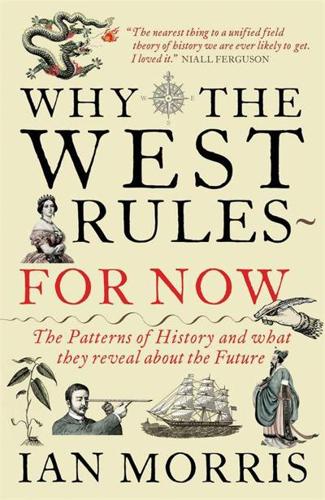
Why the West Rules--For Now: The Patterns of History, and What They Reveal About the Future
by
Ian Morris
Published 11 Oct 2010
By 2008, however, the energy scientist Vaclav Smil could offer a positively sunny estimate that the chance of even a World War II–scale conflict (killing 50 million people) before 2050 was well under 1 percent, and in January 2010 the Bulletin of the Atomic Scientists moved the minute hand of its celebrated “Doomsday Clock”—indicating how close we stand to Nightfall—back from five minutes to six minutes before midnight. The second priority is to slow down global weirding. Here things are going less well. In 1997 the world’s great and good gathered at Kyoto to work out a solution, and agreed that by 2012 greenhouse gas emissions must be cut to 5.2 percent below their 1990 levels.
…
Zheng 2005. 604 “great drain robbery”: cited from Kynge 2006, p. xiii. 605 “a threat to world peace”: Ipsos-Reid poll (April 2005), cited from “Balancing Act: A Survey of China,” The Economist, Special Report, March 25, 2006, p. 20 (available at http://www.economist.com/specialreports). 605 threat to global stability: Gallup poll (October 2007), cited from “After Bush: A Special Report on America and the World,” The Economist, March 29, 2008, p. 9 (available at http://www.economist.com/specialreports). 605 “PEOPLE AGONIZED”: China Daily headline (May 1999), cited from Hessler 2006, p. 20. 605 “strategic conspiracy”: Chinese Communist Party resolution (2004), cited from “Balancing Act: A Survey of China,” The Economist, Special Report, March 25, 2006, p. 15 (available at http://www.economist.com/specialreports). 605 “it is more likely”: Graham and Talent 2008, p. xv. 606 “No physical force”: Norman Angell, The Great Illusion (1910), cited from Ferguson 1998, p. 190. 606 “international movement of capital”: Jean Jaurès, cited from Ferguson 1998, p. 190. 606 “must involve the expenditure”: Prime Minister Edward Grey in conversation with the Austrian ambassador to Britain, July 1914, cited from Ferguson 1998, p. 191. 606 “total exhaustion”: Grey, letter to the German ambassador to Britain, July 24, 1914, cited from Ferguson 1998, p. 191. 607 “I do not know”: Albert Einstein, interview with Alfred Werner, Liberal Judaism (April—May 1949), cited from Isaacson 2007, p. 494. 608–609 estimates: Richardson 1960; Smil 2008, p. 245, http://www.thebulletin.org/content/doomsday-clock/overview. 609 “guys with gross obesity”: Anonymous official in the Indian Foreign Ministry, cited from “Melting Asia,” The Economist, June 7, 2008, p. 30 (available at http://www.economist.com). 609 “The first era”: T. Friedman 1999, p. xix. 609 “Globalization 3.0”: T. Friedman 2005, p. 10. 610 “The only salvation”: Albert Einstein, New York Times, September 15, 1945, cited from Isaacson 2007, pp. 487–88. 610 “If the idea”: Albert Einstein, comment on the film Where Will You Hide?
…
item_id=2252&issue_id=54; “Toward a Nuclear-Free World,” Wall Street Journal, January 15, 2008 (available at http://online.wsj.com/public/article_print/SB120036422673589947.html); Perkovich and Zaum 2008; Sagan and Miller 2009–2010. Decline of arsenals: Norris and Kristensen 2008, 2009a, b, 2010. Doomsday Clock: http://www.thebulletin.org/content/media-center/announcements/2010/01/14/it-6-minutes-to-midnight. Reducing consumption: McKibben 2010, Wells 2010. Kyoto Protocol: text at http://unfccc.int/kyoto-protocol/items/2830.php. Data on emissions since 1990: http://unfccc.int/files/inc/graphics/image/gif/total_excluding_2008.gif; http://co2now.org/.
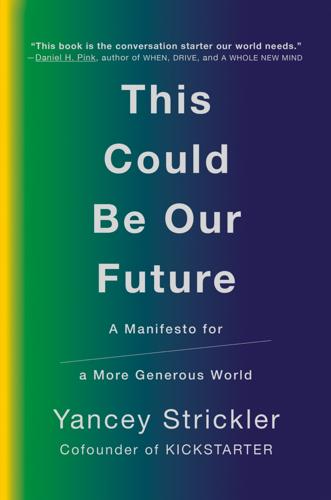
This Could Be Our Future: A Manifesto for a More Generous World
by
Yancey Strickler
Published 29 Oct 2019
* * * ■ ■ ■ ■ In the early 1950s, the United States emerged from the Second World War as a new global force. The decade before, America dropped the first (and hopefully only) atomic bombs in history, on Japan. They unleashed unprecedented power that became even scarier after the Soviet Union got the bomb, too. As the two nations faced off, the newly invented Doomsday Clock—created to reflect mankind’s proximity to self-annihilation—read just two minutes from the apocalypse. The Defense Department asked a group of scientists and mathematicians at an elite think tank called the RAND Corporation to come up with a strategy for what the United States should do in this new nuclear age.
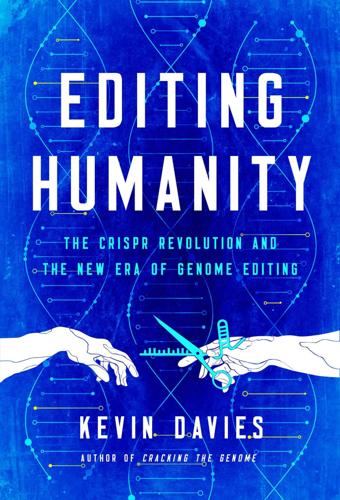
Editing Humanity: The CRISPR Revolution and the New Era of Genome Editing
by
Kevin Davies
Published 5 Oct 2020
The tipping point for Marks came in the summer of 2017, when researchers in Oregon led by Shoukhrat Mitalipov became the first American group to successfully edit a gene in a human embryo using CRISPR. Mitalipov insisted he had no plans to use gene editing to produce actual human beings. But it was hard to ignore the possibility that, in the biological equivalent of the Doomsday Clock, we had moved a big step closer to the alarming prospect of designer babies. The scientific possibilities of CRISPR seemingly know no bounds. By harnessing the components of a prehistoric bacterial immune system, scientists have developed a remarkable molecular cursor that can scan the 3 billion letters that make up the human genome for a specific sequence, cut it, then repair or change it.
…
See also Genome sequencing automated sequencing, 17–18, 279 CRISPR sequencing and, 41–42 invention of, 129, 155 new technology for, xv, 4–5, 19–21, 31–33, 41–42, 73, 209, 353–354 of newborn baby, xv progress in, 17–21, 31–33, 72–73, 209, 212, 279–281, 353–354 sponsored sequencing, 281 views on, xiv–xv DNA surgery, 63–75 Dobbs, David, 147 “Don’t Edit the Human Germline,” 197 Doomsday Clock, 5 Double helix. See also DNA anniversary of, 362 assembly of, 18, 60, 123–125, 154–155 description of, 68 discovery of, 7, 18, 123–130 glimpse of, 125–126 rungs of, 280 strands of, 26–28, 28, 100, 124–130, 327–328, 333–334 structure of, 26–28, 28, 47–48, 100, 124–130, 227, 327–328, 333–334, 355 symmetry of, 47–48 unzipping, 26–28, 28, 130, 327–328, 367 Double Helix, The, 47–48, 108, 126 Doudna, Andrew, 10 Doudna, Jennifer, x–xii, xvi, 7–10, 13, 21, 29, 46–67, 70–74, 84, 87–106, 170–189, 200–205, 220–224, 232–237, 240–243, 247, 253–254, 264, 273, 302, 324–326, 330, 335, 346, 363–367 Dow-DuPont, 186, 314 Down syndrome, 209, 322, 358 Dozy, Andrée, 155 Dragon’s Island, 124 Drayna, Dennis, 90 Duchenne muscular dystrophy (DMD), xiii, 138, 175–176, 363 Dulbecco, Renato, 135 DuPont, 45, 186, 314 Dwarfism, 359 E E. coli, 22, 33–39, 44, 55–56, 67, 69 Eckert, Maria, 60 Economist, xi, xii Edgware General Hospital, 216 Edison, Thomas, 97 Editas Medicine, 11, 13, 89, 169, 171–174, 182, 186–188, 308, 336, 361 Edwards, Robert, 15, 216–218, 232–233, 260–261 Efcavitch, Bill, 212 eGenesis, 281–283, 318 Eggleston, Angela, 328 Egli, Dieter, 215, 258, 276 Einstein, Albert, 7, 97 Eisen, Michael, 93 Ekker, Stephen, 240 El País, 31 Elf, Johan, 27 Eli Lilly, 110 Eliava, George, 162 Eliava Institute, 163 eLife, 74, 87, 88 Embryo experiments, ix–xi, 4–6, 14–15, 193–206, 211–229, 238, 243–246, 253–258, 261–276, 338–341, 348–355 Embryo fertilization, 194–198, 214–215, 222, 338–340, 351–356.
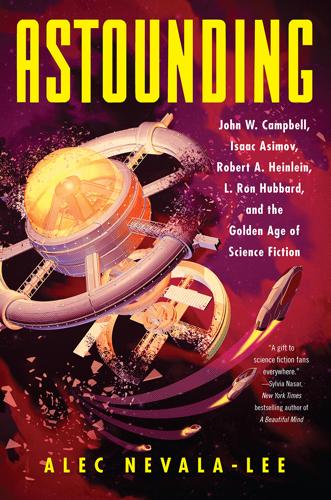
Astounding: John W. Campbell, Isaac Asimov, Robert A. Heinlein, L. Ron Hubbard, and the Golden Age of Science Fiction
by
Alec Nevala-Lee
Published 22 Oct 2018
At the conference, he proposed what he felt was a practical test for recognizing creative youngsters, but no one else took it seriously. Two days after returning home to West Newton, Massachusetts, Asimov was asked to write an article for the Bulletin of the Atomic Scientists, the journal best known for its Doomsday Clock, a visual representation of the risk of nuclear war that currently stood at seven minutes to midnight. Asimov, who was deeply concerned by the bomb, decided to return to the idea that he had raised in New York. He went to work, typing away in his attic office, which had become a refuge from his unhappy personal life—his wife was talking openly about divorce, and he was worried about their son David, who seemed to have nothing in common with his famous father.
…
Sprague, 128, 131, 324 Astounding and, 133, 139, 180, 356 Dean Drive and Campbell, 354–55 dianetics and, 274, 279, 282 fandom and, 101, 106, 107 at Nebula Awards, 385 at Philadelphia Navy Yard, 168, 170, 170, 185, 207, 212–13 postwar life of, 224–25, 226, 228 Unknown stories, 121–22 during World War II, 142, 157–58, 159, 168, 170, 180, 185, 195, 201–2, 204, 205, 207, 212–13 De Havilland, Olivia, 162 Delany, Samuel R., 364–65, 487n Del Rey, Judy Lynn, 378 Del Rey, Lester, 122, 223, 359, 378, 387 Astounding and, 122, 133, 169, 181, 279 dianetics and, 279, 282 during World War II, 141–42, 169, 180, 181 De Mille, Cecil B., 289 De Mille, Richard, 289, 290, 292 “Derelicts of Ganymede, The” (Campbell), 56 “Design Flaw” (Campbell), 315, 472n “Design Flaw” (Correy), 472n Desilu Studios, 373 Destination Moon (movie), 255, 273, 281, 336 DeWolf, Ronald (“Nibs” Hubbard), 83, 130 dianetics, 17–19, 267–95, 328–30 abortion and, 254, 269, 277, 278 announcement of, 257–58 auditing process, 254 Campbell’s traumatic memory of birth, 18–20, 251 “A Criticism of Dianetics,” 256–57, 261 first use of term, 255, 261 generating publicity for, 267–74 Hubbard’s new mental therapy, 237–39, 249–58 influences on, 259–62 in Kansas, 328–29 past lives and, 289 terminology, 253–54, 261, 329 “Terra Incognita: The Mind,” 258–59 trademark dispute, 329–30 virality of, 272–73 “Dianetics: The Evolution of a Science” (Hubbard), 267–68, 271–72 Dianetics: The Modern Science of Mental Health (Hubbard), 9, 17, 257, 261–64, 267, 268–70, 272 Dick, Philip K., 355–56, 384 Dick Cavett Show, The, 396–97 Dickson, Gordon R., 375, 378 Dimension X (radio show), 475n Dockweiler, Harry, 103 Doc Savage (magazine), 74 Don Isidro (cargo ship), 160 “Doodad” (Bradbury), 183 Doomsday Clock, 3 Door into Summer, The (Heinlein), 337–38, 479n Doubleday, 223, 348 “Double Minds, The” (Campbell), 67 Double Star (Heinlein), 337 Downs, Hugh, 381–83 dowsing, 355, 484n Doyle, Arthur Conan, 5 Dressler, Frank, 290 Duke University, 55–56, 57 Dune (Herbert), 7, 357–58 Dunn, Lucius C., 132 Durant, Will, 37, 269 Earhart, Amelia, 46 Easy-Bake Oven, 335 Ebert, Roger, 376 Edsall, USS, 160 “E for Effort” (Sherred), 248 Ehrenhaft, Felix, 446n Einstein, Albert, 11, 52 Eisenhower, Dwight D., 339 “Elder Gods, The” (Burks), 121 Eleanor Hotel, 224 “Electronic Siege, The” (Campbell), 56 electroshock therapy, 19, 209–10, 272–73 “Elimination” (Campbell), 65–66 Ellis, Carleton, 66–67 Ellis Island, 48 Ellison, Harlan, 7, 320, 346, 347–48, 367–68, 371, 399 Emerson, Ralph Waldo, 71, 137, 349 e-meter, 329, 332 Empire (Simak), 473n Empire State Building, 199, 448n Empire Strikes Back, The, 124 Enchanter (ship), 333, 334–35 End Is Not Yet, The (Hubbard), 236–37 “Endochronic Properties of Resublimated Thiotimoline, The” (Asimov), 221–22, 267, 319–20 End of Eternity, The (Asimov), 343 End Poverty in California (EPIC), 109–10 “engram,” 253–54 ENIAC, 261 “Escape, The” (Campbell), 64 Esserman, Paul, 400–401, 405 Evers, Medgar, 2 “Evidence” (Asimov), 208, 220 “evil eye,” 56 Excalibur (Hubbard), 89, 237, 238, 249–50, 260 Expanded Universe (Heinlein), 386 Explorers Club, 130–31, 258 Explorers Journal, 258–59 Exploring Tomorrow (radio show), 324, 475–76n Fantastic Voyage (movie), 348 “Farewell to the Master” (Bates), 121 Farnham’s Freehold (Heinlein), 340, 363 FBI (Federal Bureau of Investigation), 288–89, 291–92, 349, 394 Fear (Hubbard), 129–30 feedback, 260 feminism, 12, 365–66 Fermi, Enrico, 81 Fidczuk, Richard, 426n Finagle’s Law, 29–30 Final Blackout (Hubbard), 117, 129–30 “First Contact” (Jenkins), 245 Forbidden Acres (Russell), 87–88 Ford Foundation, 311 Forever War, The (Haldeman), 379 “Forgetfulness” (Campbell), 66 Fort, Charles, 77, 87, 145 “Fortress in the Sky” (Hubbard), 236, 340 For Us, the Living (Heinlein), 111–12, 118, 225 Foster, Alan Dean, 359 “Foundation” (Asimov), 139–41 Foundation’s Edge (Asimov), 400 Foundation series (Asimov), 10, 139–41, 167, 207, 220, 222, 275, 343, 349, 400 “Four Little Ships” (Jenkins), 194 Frankenstein (Shelley), 5 Freas, Frank Kelly, 310–11, 378, 416n Freemasons, 39 Freud, Sigmund, 18, 276, 278, 279 “Frictional Losses” (Campbell), 65 Fromm, Erich, 338 Fromme, Lynette “Squeaky,” 483n “Frozen Hell” (Campbell), 67–68, 69, 425–26n Fuller, Clement, 475n Future History (Heinlein), 113, 114, 118, 142, 384 Futurians, 100, 102–4, 103, 117–18, 133–34, 141, 144–45, 181, 223 Futurians, The (Knight), 99 Gable, Clark, 286 Gaiman, Neil, 7 Galactic Patrol (Smith), 77–78 Galaxy, 283–85, 343, 358 Game of Thrones (TV show), 7 Garby, Lee Hawkins, 30 Gardner, Martin, 324, 475n Garrett, Randall, 320, 321–23, 348, 366, 405 General Semantics, 110–11, 244, 255, 259–60, 280, 307 genetics, 357, 361–62 George Washington University, 45, 46 Germer, Karl, 233, 234 Gernsback, Hugo, 6, 30, 50, 57, 60, 75–76, 100 Gerrold, David, 372 Gibbon, Edward, 139 Gillespie, Jack, 103 Gingrich, Newt, 12, 415n Ginsberg, Allen, 332 Gittleson, Yvette, 241 Glory Road (Heinlein), 340 Gnome Press, 283 Gods Themselves, The (Asimov), 398 Godwin, Tom, 320 Gold, Evelyn, 283 Gold, Horace, 283–84, 343, 466–67n Goldberger, Joe, 161–62 golden age of science fiction, 7, 414n “Goldfish Bowl” (Heinlein), 146–47 Goldsmith, Cele, 348 Goldstone, Lou, 231 Goldwater, Barry, 341, 388 Goodavage, Joseph F., 484n Göring, Hermann, 8 gravity gauge, 236, 340, 456n Gray, Arthur Z., 305–6 Grazer, Brian, 405 Great Depression, 57, 63, 102–3, 274 Greater New York Science Fiction League, 99–100, 102 Great Exclusion Act, 108–9 Greek mythology, 25 Green, Joseph, 376 Greenberg, Martin, 283 Greene, William Chace, Jr., 33 “Green Hills of Earth, The” (Heinlein), 226–27, 456n Green Lantern, 276 Gripsholm, MS, 172–73 Gross, Henry, 316 Grow Old with Me (Asimov), 220–21, 223 Gruber, Frank, 83–84 Guam, 44–45 “guk,” 287 “Gulf” (Heinlein), 229–30, 275 Haldeman, Joe, 365, 379 Hall, Desmond, 77 Hamilton, Edmond, 427n Hammond, James, 376 Hammond, Margaret, 376 hard science fiction, 64, 414n Harrison, Harry, 363, 375, 378, 387 Harrison, Laura, 20 Hartwell, Dickson, 242–43 Have Space Suit—Will Travel (Heinlein), 338 Hawks, Howard, 299–300 Hayakawa, S.
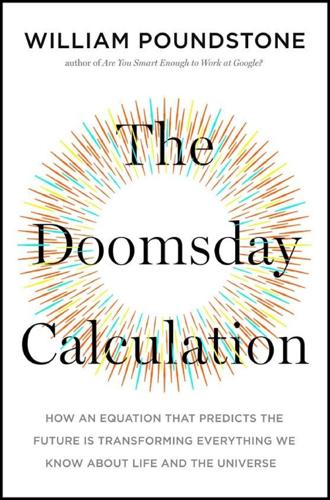
The Doomsday Calculation: How an Equation That Predicts the Future Is Transforming Everything We Know About Life and the Universe
by
William Poundstone
Published 3 Jun 2019
It is not easy for our planet to support billions of people. This is the juggling act of a finely tuned global economy that moves food and goods across continents and oceans. If anything were to happen to that global economy, billions could die of starvation. The small postapocalyptic population would then slow down the hands of the doomsday clock. Human extinction might be put off a long time, but billions would have died. Wells’s estimated 1 percent per year chance of societal collapse is greater than the chance that an average home will burn down this year. We take that seriously enough to buy insurance. Parents worry about unsafe car seats and vaccination side effects and doctored Halloween candy.
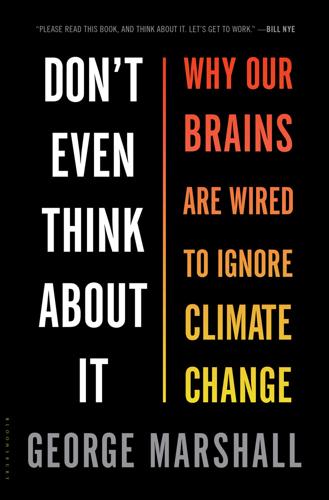
Don't Even Think About It: Why Our Brains Are Wired to Ignore Climate Change
by
George Marshall
Published 18 Aug 2014
On January 1, a few slot machines and cash registers became momentarily confused, that was all. Campaigners have always struggled with climate change’s un-engaging timeline and tried to find ways to generate the same compelling sense of urgency and symbolism as Y2K. In 1947, the Bulletin of Atomic Scientists had hit on the novel image of the Doomsday Clock, which is always close to striking midnight, to dramatize the risks of nuclear weapons. In 2012, the hands were moved to five minutes to midnight to recognize the coming climate change catastrophe, and the following year, Rajendra Pachauri, the head of the Intergovernmental Panel on Climate Change, announced its latest report with the words “We have five minutes before midnight.”
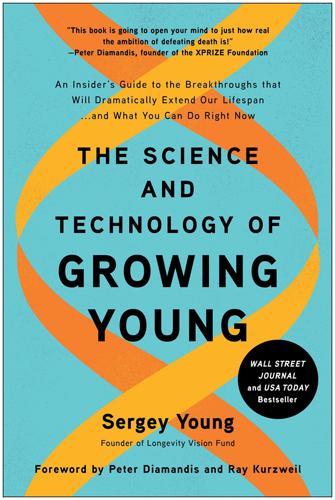
The Science and Technology of Growing Young: An Insider's Guide to the Breakthroughs That Will Dramatically Extend Our Lifespan . . . And What You Can Do Right Now
by
Sergey Young
Published 23 Aug 2021
There are many imaginable dystopian scenarios such as these. The truth is that it is impossible to adequately address these future problems from the perspective of the present day. In every age, we have faced frightening new challenges. In 1953, the Bulletin of the Atomic Scientists infamously declared the nuclear doomsday clock to be at a mere “two minutes to midnight.” And yet, despite the nuclear arms race and the fears it engendered for decades, no nuclear war erupted, and the Cold War was formally declared over by 1991. With new technologies come new fears, followed by new solutions. Yes, we make mistakes along the way.

Amazon: How the World’s Most Relentless Retailer Will Continue to Revolutionize Commerce
by
Natalie Berg
and
Miya Knights
Published 28 Jan 2019
But there’s one word that often gets overlooked in all this talk of an impending apocalypse – relevance. The most important rule in retail is being relevant to customers. If you can’t deliver on the basic principles of giving customers what they want or standing out from the competition, then you don’t stand a chance. For these retailers, yes, the Doomsday clock is ticking. For those willing to embrace change, however, this is a fantastically exciting time to be in retail. The future is fewer, more impactful stores. The future is offering shoppers a more blended online and offline experience. And the future is excelling at WACD: What Amazon Can’t Do.
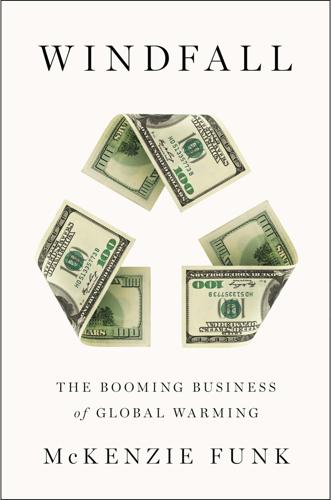
Windfall: The Booming Business of Global Warming
by
Mckenzie Funk
Published 22 Jan 2014
The atmospheric concentration of carbon dioxide, our principal contribution to the climate and the principal driver of warming, has only been rising. It is now 40 percent higher than preindustrial levels, higher than it has been anytime in the last 800,000 years. In New York’s Madison Square Garden, a seventy-foot doomsday clock, recently unveiled by Deutsche Bank, is tracking greenhouse-gas levels in real time: 2 billion metric tons added each month, or 800 a second, for a total of 3.7 trillion tons and counting. The ticker has thirteen red digits, but when you stare at it from Seventh Avenue, the last three are a blur.

The Better Angels of Our Nature: Why Violence Has Declined
by
Steven Pinker
Published 24 Sep 2012
Snow, Herman Kahn, Carl Sagan, and Jonathan Schell) wrote that thermonuclear doomsday was likely, if not inevitable.137 The eminent international studies scholar Hans Morgenthau, for example, wrote in 1979, “The world is moving ineluctably towards a third world war—a strategic nuclear war. I do not believe that anything can be done to prevent it.”138 The Bulletin of the Atomic Scientists, according to its Web site, aims to “inform the public and influence policy through in-depth analyses, op-eds, and reports on nuclear weapons.” Since 1947 it has published the famous Doomsday Clock, a measure of “how close humanity is to catastrophic destruction—the figurative midnight.” The clock was unveiled with its minute hand pointing at 7 minutes to midnight, and over the next sixty years it was moved back and forth a number of times between 2 minutes to midnight (in 1953) and 17 minutes to midnight (in 1991).
…
Nonetheless, for all the differences between the American “mad cowboys” and the European “surrender monkeys,” the parallel movement of their political culture away from war over the past six decades is more historically significant than their remaining differences. IS THE LONG PEACE A NUCLEAR PEACE? What went right? How is it that, in defiance of experts, doomsday clocks, and centuries of European history, World War III never happened? What allowed distinguished military historians to use giddy phrases like “a change of spectacular proportions,” “the most striking discontinuity in the history of warfare,” and “nothing like this in history”? To many people, the answer is obvious: the bomb.
…
dominance and anarchy and the brain as cause of war circuit in brain gender differences in group (tribalism) hierarchies of and information introduction of concept and nationalism dominance (cont.) and sadism and self-esteem and social identity as zero-sum game dominance hierarchy Dominica Donohue, John Doomsday Clock dopamine Dostoevsky, Fyodor Douglas, William O. Douglass, Frederick Dover Doctrine Dowd, Maureen Doyle, Arthur Conan Draco Draize procedure drones drugs: decriminalization of 1960s trafficking War on Drugs Druids Dubner, Stephen Duck Soup (film) Duckworth, Angela dueling Dukakis, Michael Dulles, John Foster Dumas, Alexandre père Durham, Margaret Dworkin, Andrea Dylan, Bob dynasties, see Age of Dynasties; monarchy Eastern Europe abortions in and democracy and genocide violence against women in wars in East Timor Easy Rider (film) Eckhardt, William Eden, William education and civil war and democracy IQ tests method and content of ego depletion egotism Egypt, ancient Egypt, modern Eichmann, Adolf 80:20 rule Eighty Years’ War Einstein, Albert Eisenhower, Dwight D.
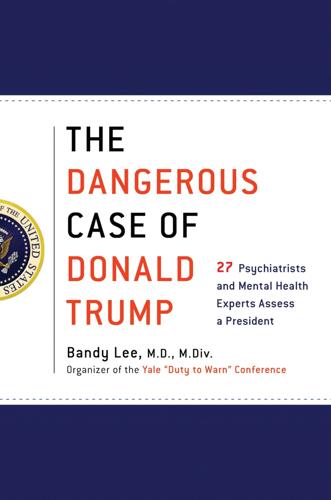
The Dangerous Case of Donald Trump: 27 Psychiatrists and Mental Health Experts Assess a President
by
Bandy X. Lee
Published 2 Oct 2017
On militarism, he wants to raise the military budget, already over half of discretionary spending, leading right now to confrontations which could be extremely hazardous (Newman 2016). The Bulletin of Atomic Scientists regularly brings together a group of scientists, political analysts, other serious people, to try to give some kind of estimate of what the situation of the world is. The question is: How close are we to termination of the species? And they have a clock, the Doomsday Clock. When it hits midnight, we are finished. End of the human species and much else. And the question every year is: How far is the minute hand from midnight? At the beginning, in 1947, the beginning of the nuclear age, it was placed at seven minutes to midnight. It has been moving up and back ever since.
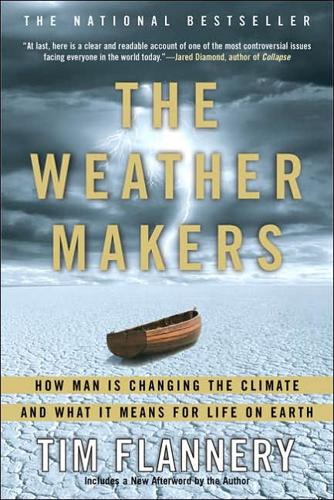
The Weather Makers: How Man Is Changing the Climate and What It Means for Life on Earth
by
Tim Flannery
Published 10 Jan 2001
“At last here is a clear and readable account of one of the most important but controversial issues facing everyone in the world today. If you are not already addicted to Tim Flannery’s writing, discover him now: this is his best book yet.” —Jared Diamond, Pulitzer Prize&nd;winning author of Guns, Germs, and Steel “Of the doomsday clocks ticking toward midnight, climate change is the most fearful…One cannot do better than read Flannery’s eloquent and authoritative account in The Weather Makers. Understanding is the first step toward salvation.” —John Polanyi, Nobel Laureate “Finally, a book about a global crisis that people can understand.
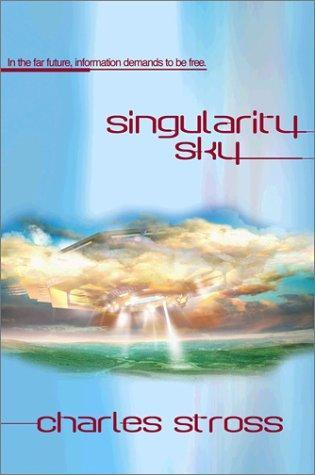
Singularity Sky
by
Stross, Charles
Published 28 Oct 2003
Presently, they shut down and coasted, retaining only enough reaction mass for terminal maneuvering when they got within ten seconds of the enemy. Ahead of the Lord Vanek, the glinting purple crosses of the unpowered torpedoes fell forward toward the enemy. A minute later, Gunnery Two spoke up. "I've lost missile one, sir. I can ping it, but it doesn't respond." "Odd—" Mirsky's brow furrowed; he glanced at the doomsday clock. The battlecruiser was closing on the destination at a crawl, just 40 k.p.s. The enemy was heading toward them at better than 200 k.p.s., decelerating, but their thrust was dropping off—if this continued, closing unpowered at 250 k.p.s., their paths would intersect in about 500 seconds, and they'd be within missile-powered flight range 200 seconds before that.
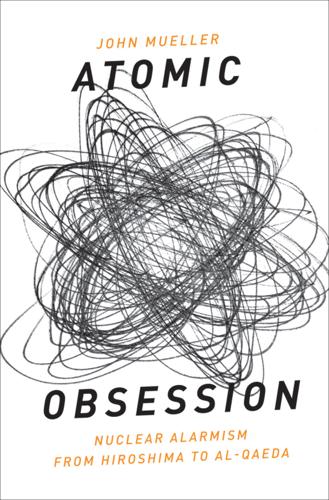
Atomic Obsession: Nuclear Alarmism From Hiroshima to Al-Qaeda
by
John Mueller
Published 1 Nov 2009
Public opinion polls conducted in the United States characteristically found very substantial percentages opining that the next world war would occur within 25 years.2 With some desperation, schemes were formulated at the war’s end to try to invalidate such gloomy sentiments. Some Western scientists, apparently consumed with guilt over having participated in the development of a weapon that could kill with much-heightened effectiveness, helped found the Bulletin of the Atomic Scientists in 1945. It soon sported its “doomsday clock” on the cover, suggesting that there was hope of preventing Armageddon, but only if we were quick about it. The clock has remained poised at a few minutes before midnight ever since, from time to time nudged slightly one way or the other by various events. (Amazingly, in 2006 the Bulletin launched a subscription campaign boldly and unapologetically built around the slogan “Dispensing facts instead of fear for over sixty years.”)
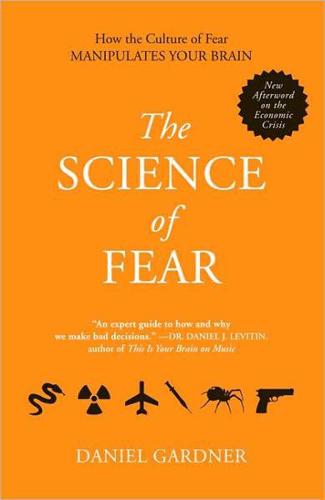
The Science of Fear: How the Culture of Fear Manipulates Your Brain
by
Daniel Gardner
Published 23 Jun 2009
If a scientist delivers the simple, unconditional, absolutely certain statements that politicians and journalists want, he is talking as an activist, not a scientist. In January 2007, a group of leading scientists, including astrophysicist Stephen Hawking, announced that the hands of the “Doomsday Clock”—a creation of the board of directors of the Bulletin of Atomic Scientists—would be moved forward. It was “five minutes to midnight,” they said. A key reason for this warning was the fact that, according to the statement of the board of directors, “global warming poses a dire threat to human civilization that is second only to nuclear weapons.”
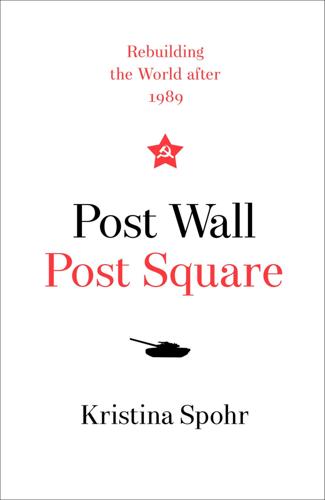
Post Wall: Rebuilding the World After 1989
by
Kristina Spohr
Published 23 Sep 2019
At Washington, Reagan and Gorbachev signed away a whole category of nuclear weapons in the Intermediate Nuclear Forces Treaty – the first time the superpowers had ever agreed to reduce their nuclear arsenals. Here was a significant step in defusing the Cold War, making it less likely that a nuclear conflict would break out. Atomic scientists put back their celebrated ‘Doomsday Clock’ to six minutes before midnight, instead of three. And on 31 May 1988, when Reagan was asked in Red Square whether he still felt the USSR was an ‘evil empire’, he replied ‘I was talking about another time, another era.’[12] Reagan was moving on – and so was Gorbachev. Six months later, the dramatic address at the UN on the morning of 7 December was for the Soviet leader a ‘watershed’ moment.
…
Matlock Jr Reagan and Gorbachev: How the Cold War Ended Random House 2004; James Graham Wilson The Triumph of Improvisation: Gorbachev’s Adaptability, Reagan’s Engagament, and the End of the Cold War Cornell UP 2014; Svetlana Savranskaya & Thomas Blanton (eds) The Last Superpower Summits: Gorbachev, Reagan and Bush – Conversations that Ended the Cold War CEU Press 2016 (hereafter TLSS); Jonathan Hunt & David Reynolds ‘Geneva, Reykjavik, Washington, and Moscow, 1985–1991’ in Kristina Spohr & David Reynolds (eds) Transcending the Cold War: Summits, Statecraft and the Dissolution of Bipolarity in Europe, 1970–1990 Oxford UP 2016 pp. 151–79. On the Doomsday clock, see Bulletin of the Atomic Scientists thebulletin.org/timeline Back to text 13. Anatoly Chernyaev – Notes from a Meeting of the Politburo 31.10.1988 Archive of the Gorbachev Foundation Moscow (hereafter AGF) Digital Archive Wilson Center (hereafter DAWC); Mikhail Gorbachev Memoirs Bantam 1997 p. 459; Politburo meeting 24.11.1988, printed in V Politbyuro TsK KPSS.
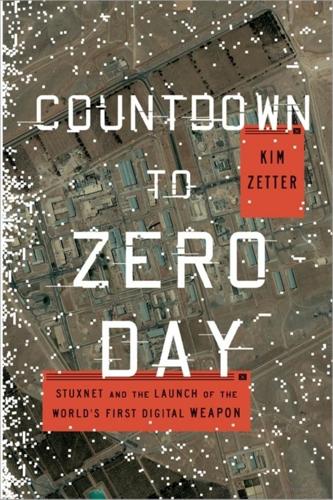
Countdown to Zero Day: Stuxnet and the Launch of the World's First Digital Weapon
by
Kim Zetter
Published 11 Nov 2014
Also per author interview with David Albright in January 2012. 35 Albright, Peddling Peril, 200–1. 36 The UN Security Council applied economic sanctions against Iran in December 2006, and in March 2007 it voted unanimously to freeze the financial assets of twenty-eight Iranians linked to its nuclear and military programs. 37 Just when matters with Iran were at their most tense, North Korea tested a nuclear device. The deteriorating nuclear situation on multiple fronts prompted the Bulletin of Atomic Scientists on January 17, 2007, to move the minute hand of its famous Doomsday Clock two minutes closer to midnight. Instead of seven minutes to Doomsday, it was now set to five. 38 Due to export controls and other difficulties producing the rotors from maraging steel, as the centrifuge design required, Iran had abandoned production of the IR-2s in 2002. But Iranian scientists modified the design to substitute a carbon fiber rotor instead and sometime after 2004 resumed production. 39 Collins and Frantz, Fallout, 259. 40 “Prime Minister Ehud Olmert’s Address at the 2007 Herzliya Conference,” January 24, 2007.

The Precipice: Existential Risk and the Future of Humanity
by
Toby Ord
Published 24 Mar 2020
And thinking that might well be the last sunset I saw” (Ellsberg, 2017, pp. 200–1). 54 Daniel Ellsberg’s estimate in light of all the recent revelations is “Far greater than one in a hundred, greater that day than Nitze’s one in ten” (Ellsberg, 2017, p. 220). 55 I was particularly surprised in January 2018 to see the Bulletin of the Atomic Scientists setting their famous Doomsday Clock to “2 minutes to midnight,” stating that the world is “as dangerous as it has been since World War II” (Mecklin, 2018). Their headline reason was the deepening nuclear tensions between the United States and North Korea. But the clock was intended to show how close we are to the end of civilization, and there was no attempt to show how this bears any threat to human civilization, nor how we are more at risk than during the Cuban Missile Crisis or other Cold War crises. 56 The United States still has 450 silo-based missiles and hundreds of submarine-based missiles on hair-trigger alert (UCS, n.d.). 57 This is related to the “pacing problem” considered by those who study the regulation of technology.
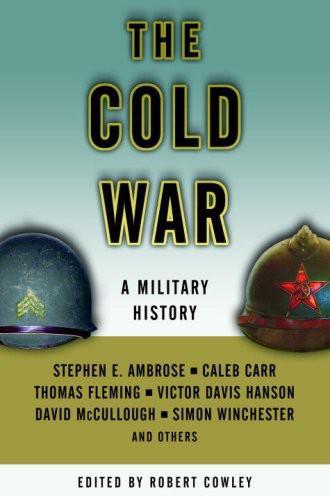
The Cold War
by
Robert Cowley
Published 5 May 1992
A final point emphasizes the awesome threat posed by ICBMs, as well as their central place in the deterrent balance of terror at the strategic heart of the Cold War: Both the Soviet Union and the United States were so terrified of the threat of an ICBM attack and, paradoxically, so determined to preserve the stabilizing deterrent power of the threat that—at least so far as the public record shows—no missile was ever launched from an operational ICBM silo, nor was an ICBM ever fired with a live nuclear or thermonuclear warhead aboard. The War Scare of 1983 JOHN PRADOS For four decades and more, we lived in perpetual fear of war. The nuclear doomsday clock appeared to be forever stuck at one minute to midnight, the witching hour for the world. Several times the long hand moved forward by several alarming seconds. To put the feeling another way, it was like walking around with collective aneurysms in our brains that could burst all at once and kill without warning.
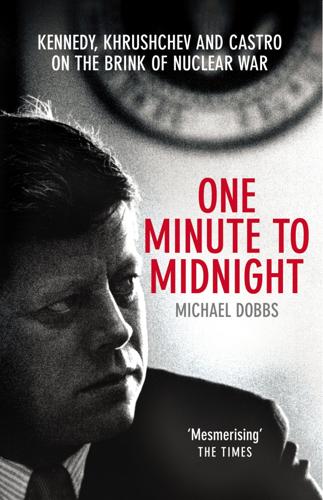
One Minute to Midnight: Kennedy, Khrushchev and Castro on the Brink of Nuclear War
by
Michael Dobbs
Published 3 Sep 2008
Khrushchev, representing the rival ideological forces that had taken the world to the edge of nuclear annihilation, stepped back from the abyss. If the Cuban missile crisis was the defining moment of the Cold War, Black Saturday was the defining moment of the missile crisis. It was then that the hands of the metaphorical Doomsday Clock reached one minute to midnight. The day began with Fidel Castro dictating a telegram urging Khrushchev to use his nuclear weapons against their common enemy; it ended with the Kennedy brothers secretly offering to give up U.S. missiles in Turkey in exchange for a Soviet climbdown in Cuba. In between these two events, Soviet nuclear warheads were transported closer to Cuban missile sites, a U-2 spy plane was shot down over eastern Cuba, another U-2 strayed over the Soviet Union, a Soviet nuclear-armed submarine was forced to the surface by U.S.
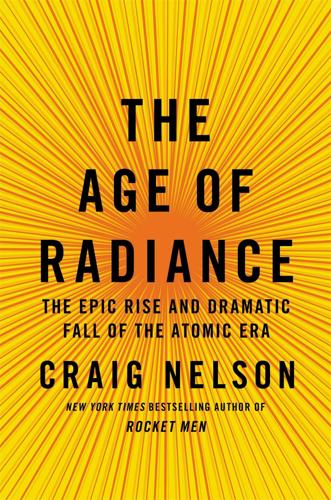
The Age of Radiance: The Epic Rise and Dramatic Fall of the Atomic Era
by
Craig Nelson
Published 25 Mar 2014
But the most dramatic change was the American public’s attitude about nuclear war. Before Cuba, it was common US wisdom that another world war was in our future, and that armed conflict with the Soviet Union, likely nuclear, was certain. For thirty years, the Bulletin of the Atomic Scientists was published with a doomsday clock set at minutes to midnight; in 1960, C. P. Snow called atomic war a mathematical certainty, and many others, including Albert Einstein, had a similar outlook. In 1959, 64 percent of Americans said “war, especially nuclear war” was their country’s biggest problem . . . but by 1965 it was 16 percent.

The Code: Silicon Valley and the Remaking of America
by
Margaret O'Mara
Published 8 Jul 2019
(The Valley tech community had been so delighted by their heroic portrayal in the book that they reclaimed the label as an honorific, and Stewart Brand began holding an annual “Hackers Conference” to celebrate the movement they had forged.) An outlaw programmer was the hero of William Gibson’s sci-fi novel Neuromancer, a cult bestseller published right around the same time. Even run-of-the-mill geeks got the girl in teen hits Sixteen Candles and Revenge of the Nerds. As the Doomsday Clock ticked closer to midnight, it wasn’t surprising that so many dreamed of a Hollywood ending where these hackers used tech to make peace instead of war.5 STAR WARS Silicon Valley was ground zero for the Jedi Knights of the computer world, and not just because Apple had portrayed it that way during the 1984 Super Bowl.